
































































































































































































































86% WOULD RETURN TO AN ESTABLISHMENT IF THEY LIKED THE FEATURED LIVE MUSIC
86% WOULD RECOMMEND THE ESTABLISHMENT IF THEY ENJOY THE MUSIC
80% SAY THAT MOST OF THE RESTAURANTS AND BARS THEY FREQUENT HAVE MUSIC PLAYING
NEARLY 70% OF MILLENNIALS SAID THAT HAVING NO MUSIC NEGATIVELY IMPACTS THEIR EXPERIENCE
AND RESTAURANT OWNERS WEIGH IN 89% OF MILLENNIALS SAID THAT GOOD MUSIC MAKES A MORE MEMORABLE EXPERIENCE
WITH LIVE MUSIC (…) THERE WERE MORE LIQUOR SALES, AND THAT’S A 75% PROFIT MARGIN.
THE MORE UPBEAT, THE BETTER CHANCE FOR AN UPSELL, THE BETTER CHANCE THEY WANT TO STAY A LITTLE LONGER.
COLORADO AND UTAH
-THOMAS OWNER, FAMILY ITALIAN RESTAURANT ATLANTA, GA
-CHRISTOPHER VINEYARD OWNER AND TASTING ROOM OPERATOR LOS ANGELES, CA
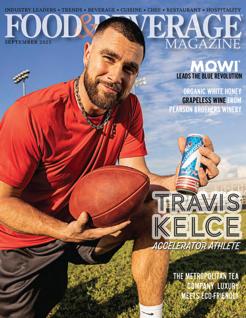












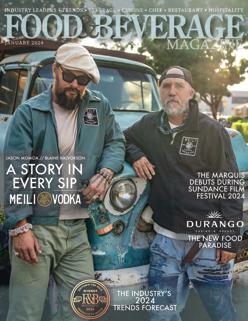
COVER IMAGE
Invivo X, SJP
Sarah Jessica Parker, Rob Cameron, and Tim Lightbourne
PUBLISHER
MICHAEL POLITZ Michael@fb101.com
DIRECTOR & EDITOR-IN-CHIEF
LAUREN KANE Lauren.Kane@fbmagazine.com
SOCIAL MEDIA CONTENT MANAGER
SHELBY POLITZ Shelby.Politz@fbmagazine.co
DIRECTOR OF PROGRAMMATIC SALES
BARB ROGERS Programmatic@fbmagazine.com
ACCOUNT MANAGERS
LENORE O’MEARA Lenore.Omeara@fbmagazine.co
AMANDA DAY Amanda.Day@fbmagazine.co SUSAN GOLD Susan.Gold@fbmagazine.com
CONTRIBUTING EDITORS
MICHAEL POLITZ
STEPHANIE BLITZ
CONTRIBUTING WRITERS
LAUREN MCINDOO
LENORE O’MEARA
SUSAN GOLD
SHELBY POLITZ
ETHAN BALSAMO
RYAN SLATTERY
We honor and remember the support of Chef Kerry Simon, Gary Cantor, Robin Leach, Chef Paul Prudhomme, & Gary Coles


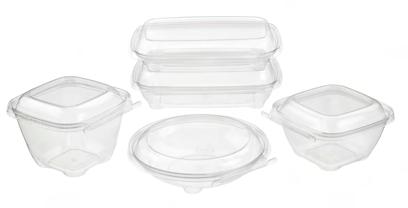





In the world of wine, it’s rare to find a brand that boldly charts its own course, blending innovation with a hint of audacity. Yet, that’s precisely what Invivo has done since its inception. Co-founded by two childhood friends from New Zealand, Invivo’s journey is a testament to resilience, creativity, and the power of collaboration.
The story of Invivo didn’t begin in a vineyard but rather on a sports field at Auckland Grammar School in New Zealand. It was here that Rob Cameron, Invivo Founder & Chief Winemaker, and Tim Lightbourne, Invivo Founder & Director, met at the age of 14. They played on the same sports team and forged a friendship that would endure across continents and careers. Tim’s career spanned global FMCG and luxury brands like Groupe Danone, L’Oreal, and HJ Heinz, while Rob pursued his passion as a classically trained winemaker. Along the way, Tim and Rob made it a priority to keep in touch and in 2006, fate reunited them in Europe.
They met up for a drink at a London pub, and as the evening wore on, the conversation turned from
reminiscing about old times to dreaming about the future. It was in that pub, over a couple of pints, that the idea for Invivo was born. Together, the two were determined to tell a different story in the world of wine.
“The industry was saturated with brands steeped in generations of tradition, focused on soil and acidity, but we wanted to cut through the noise with an innovative approach, injecting creativity and fun into our brand,” said Lightbourne. “We weren’t interested in following the well-trodden path; we wanted to carve out our own niche”
The plan was simple but ambitious. Over the next six months, in 2007, they meticulously crafted a business plan, pooled together what little money they had, and set out to turn their dream into reality. In 2008, the pair launched their first wine and although the journey wasn’t always an easy one, they’ve carved out a space for themselves in an undeniably competitive industry. And as they say, the rest is history. But in the case of Invivo X, SJP, it just so happens to be history in the making.

“I’m fully involved in every business that I attach my name to, and I couldn’t move forward without treating this the same way. Knowing the operation inside out is what I fnd to be most exciting and informative,”
said Sarah Jessica Parker
One of the brand’s most significant milestones has been its partnership with Sarah Jessica Parker. After seeing success in the UK, Ireland, and New Zealand with UK talk show host Graham Norton, Tim and Rob wanted to replicate the model in the U.S. It didn’t take long before they determined Sarah Jessica Parker as the ideal partner and reached out to her agent.
Although she was a wine lover, Sarah Jessica wasn’t necessarily looking to get into the wine industry. Initially, she didn’t think she knew enough about the process to be involved but Tim and Rob convinced her that wine is not just for the rarefied few or the knowledgeable connoisseurs. The opportunity piqued Sarah Jessica’s curiosity, leading her to say yes to this joint venture and wanting to be hands-on.
“I’m fully involved in every business that I attach my name to, and I couldn’t move forward without treating this the same way. Knowing the operation inside out is what I find to be most exciting and informative,” said Parker. “Tim and Rob have been excellent teachers and let me ask far too many questions — and I think we’re all better for it.”
When Tim and Rob first met Sarah Jessica in New York, they instantly clicked. From blending and tasting the wines with them each year to working on the label and meeting buyers, she was all in with the Invivo X, SJP brand and its mission. Tim and Rob are so grateful for the ways in which Sarah Jessica has been a phenomenal partner, bringing her business acumen, star power, and genuine passion for wine to the table.


Together, the team has successfully launched Invivo X, SJP, a range of wines that reflect both Sarah Jessica’s tastes and Invivo’s winemaking expertise. Their Sauvignon Blanc, the original hero of the brand’s collection, has evolved to include unique techniques, resulting in a wine that Sarah Jessica absolutely loves.
“Usually, Sauvignon Blanc from this area is pitched high (in terms of acidity) and very architectural but we went rogue and broke a few rules in that first blending,” said Parker. “The final result was beautifully balanced and, in my opinion, much more pronounced in flavor than similar wines. I was immediately mad for it.”
Their French Rosé and newly released New Zealand Pinot Noir have also been well-received, each crafted with the same attention to detail and quality. The French Rosé is classically Provincial in style. It’s a delicate pale pink color, dry, and has subtle strawberry notes. It’s everything you want in a dry rosé and consumers love that pairs perfectly with any kind of food. The Pinot Noir is from Marlborough’s cool southern valleys, with a small amount of fruit from Central Otago to add depth and complexity, followed by eleven months in French oak barrels. It is fruit-forward but has a great structure, too. Think of lots of dark cherry notes with leather and holiday spices.
“I always say that our wines can be taken seriously, as demonstrated through our consistently high scores, but are seriously fun! It’s important for us to thoughtfully add wines into our collection that align with who we are and our overarching vision,” said Cameron.
“Usually, Sauvignon Blanc from this area is pitched high (in terms of acidity) and very architectural but we went rogue and broke a few rules in that frst blending,”
said Sarah Jessica Parker

What sets Invivo apart isn’t just the quality of the wine but the way in which the brand connects with its audience. Their content-rich, non-traditional marketing strategy resonates with younger wine drinkers who appreciate how Invivo X, SJP makes the wine industry more accessible and fun. The brand has played in the NFT and crypto space, and its crowdfunding efforts have turned Invivo into a “tribe” winery, with a loyal community of supporters.
Invivo consistently receives high scores and has been named in the Top 100 lists of the world’s best wines. But what really drives the brand is the connection they’ve built with consumers. People appreciate seeing the behind-the-scenes blending sessions with Sarah Jessica, knowing that she’s genuinely involved in every aspect of the brand. They value the authenticity of the inception story that involves starting with nothing that led to creating something that is greater than the sum of its parts.
However, it wasn’t always easy. During the early years, Invivo barely survived by doing tastings in any store across New Zealand that would have them, just to get another order. But those challenges only made them more resilient. The team learned to be scrappy, to innovate, and to punch above their weight—a Kiwi trait that has served them well on the global stage.
“There are challenges in every business, and the wine industry is no different. There are many factors that are out of your control, including the quality of the grapes from season to season. It can be hard to arrive at a final blend that everyone can get behind,” stated Parker. “That being said, the most fulfilling part would be producing wine that I truly love and
getting to share that with my family, friends and customers around the globe.”
In the end, perseverance paid off. Tim and Rob have earned respect in the industry, not through tradition but through a willingness to challenge the status quo. The Invivo X, SJP team have done things that few other wineries would dare to try and it’s proven to be effective.
Invivo is derived from the Latin phrase “in life,” reflecting the team’s desire for their wines to be part of life’s celebrations and quiet moments alike. And as they continue to expand, Invivo X, SJP remains focused on maintaining the quality and authenticity that have become the brand’s trademarks. As the fastest-growing premium New Zealand Sauvignon Blanc in the U.S., they are excited to see where this momentum takes them. With a commitment to continuing their innovative approach, Tim, Rob and Sarah Jessica are always looking for new ways to engage with their audience while pushing the boundaries of what’s possible in the wine industry.
New Zealand may be a small country at the bottom of the world, but Tim and Rob have shown that with creativity, resilience, and a bit of Kiwi ingenuity, anything is possible. From a London pub to global success, the journey of Invivo X, SJP is just getting started. And with Sarah Jessica Parker on their side, the possibilities are limitless. Consumers should be very excited to see what the future holds as this powerhouse trio continues sharing their wines — and their story — with the world one bottle at a time.
Visit the Invivo X, SJP, official site to learn more about these award-winning wines and where to purchase them.
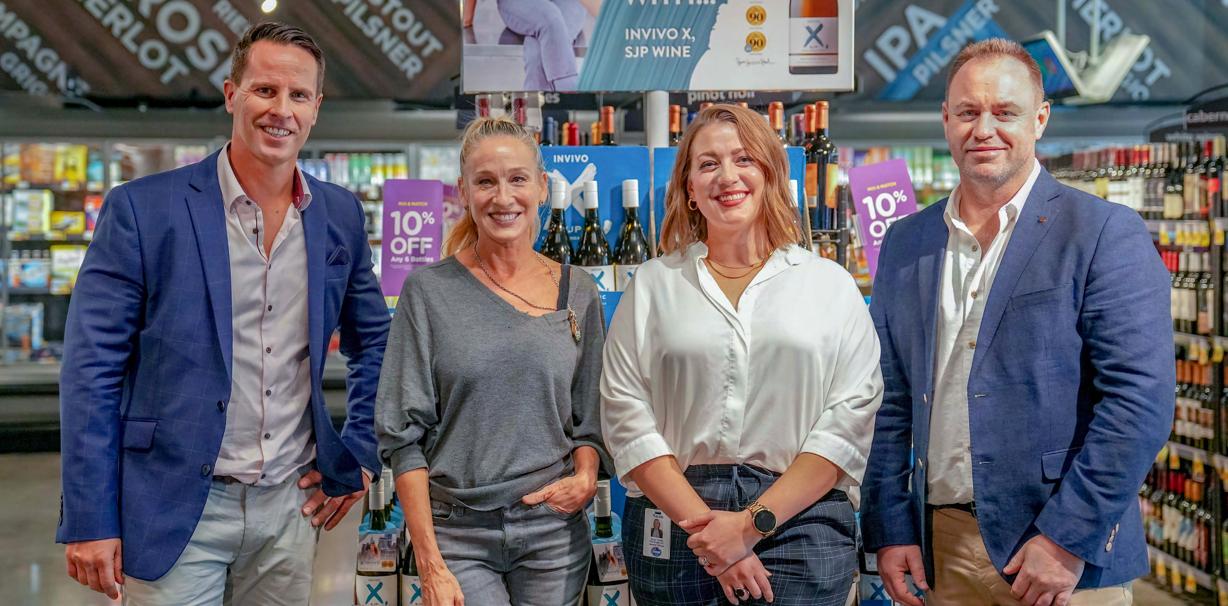

Byline by: William Templeton, Director of Corporate Social Responsibility and Sustainability, Amway

As consumer preferences shift decisively toward an increased emphasis on sustainability, we are seeing a profound transformation in how individuals across all generations, from Baby Boomers to Generation Z, are approaching their purchasing decisions. In the last five years, there has been a 71% increase in online searches for sustainable goods globally, with momentum continuing to grow. As a result, brands with a clear commitment to strong sustainability practices are attracting and retaining customers who prioritize ethical sourcing and environmentally conscious production, reshaping the landscape of corporate responsibility.
Sustainably designed products have been part of Amway since its beginning in 1959. The company’s first product, Liquid Organic Cleaner, was one of the world’s first biodegradable cleaners.
A commitment to progressing its regenerative farming practices, carbon-reduced operations and consciously created products is top of mind for the company. Amway has been determined to find ways to reduce its environmental footprint and currently operates four farms worldwide that adhere to strict sustainable farming methods and even regenerative agricultural practices. When local conditions prevent them from growing certain crops, Amway partners with a network of audited farms that are held to similar high standards.
With consumers more eager than ever for transparency about their products, traceability of product creation has become a key factor in providing assurance for those who seek proof of safety, authenticity and purity of products. Some consumers want to see evidence of sustainable practices along the supply chain, and some simply just want to feel emotionally connected to the products and the people behind those products. For this reason, the botanicals grown on Amway farms and used in a range of products can be traced all the way from formulation to their origins of botanical ingredients, then through to manufacturing and distribution, providing consumers with peace of mind in the purchasing decisions they make.

These botanical ingredients tracked from seed to supplement are the foundation of the Nutrilite product line, the number one selling vitamin and dietary supplement brand, globally. Certified organic practices, as seen with Amway’s certified organic farms, avoid the use of harmful chemicals and promote biodiversity, water conservation and soil health.
Partner farms that grow plants used in Nutrilite products must meet Amway’s strict quality standards. To this end, Amway developed an exclusive agricultural certification program called NutriCert(TM) which ensures that certified partner farms in 27 countries meet the similar quality requirements that Amway adheres to on their nearly 6,000 acres of certified organic farms.
For example, Amway’s Nutrilite All Plant Protein Powder is NutriCert certified, USDA Organic, and Non-GMO Verified. It packs 21 grams of plant protein from brown rice and peas from NutriCert certified partner farms and chia grown on Amway’s organic farm and partner farms. This supplement is only one of a wide range of offerings developed by a team of over 800 in-house scientists, engineers and technicians spread across 75 labs, all focused on researching and developing innovative products that enhance lives.

The market share for sustainable products continues to increase along with brand loyalty for companies who are making a clear effort to create a healthier planet. In fact, 84% of customers say poor environmental practices will actually alienate them from specific brands or companies.
Companies are likely to continue investing in renewable energy sources and circular economy models, focusing on product life cycle management to minimize waste. There are alsoregulatory pressures and incentives to drive businesses to adopt greener practices, making sustainability not just a choice but a necessity.
As these trends evolve, Amway will remain committed to making improvements that will reduce the environmental impact of their products for their entire life cycle—including how formulas are created, how ingredients are chosen and sourced, and how products are manufactured, packaged and distributed. Amway’s actions and commitments will reflect the planet’s most urgent needs as well as new knowledge coming to light from global research.
After all, Amway believes health and wellness is rooted in healthy people, healthy plants and a healthy home. In order to make that happen, it is crucial to be both purposeful and impactful in its contribution to a healthier planet.




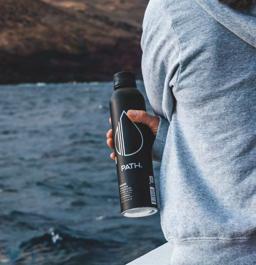

The environmental toll single-use plastic is having on the world is staggering. According to the Public Interest Research Group, Americans discard 7 pounds of materials per person every day, with 30% of this waste comprising single-use products and packaging. The crisis has resulted in single-use plastic bans worldwide, including at airports like SFO and LAX, Universities, Grocery Stores, and entire school districts. Over 100 sports organizations have recently called for major beverage brands to increase their reusable options. The U.S. federal government has also recently announced a goal to phase out all federal government purchases of single-use plastic.
PATH is a trailblazing brand that offers the only certified refillable aluminum bottled water on the market. With a mission deeply rooted in environmental change, PATH is
reducing single-use plastic by transforming how the world thinks about and consumes bottled water, providing a truly sustainable option focusing on reuse.
The shift to reusable packaging is essential for achieving substantial environmental gains, as advocated by experts like Olga Kachook of the Sustainable Packaging Coalition.
PATH emerged from the growing concern over the environmental impact of single-use plastic bottled water. As three friends stood in a store aisle and saw a sea of plastic bottled water options, the company’s core belief emerged that day - that reusable packaging, especially made from materials like aluminum, offers a more powerful alternative to traditional single-use options.
PATH differentiates itself through its innovative hybrid use of aluminum, a material that can be reused and recycled countless times. This choice aligns with the broader environmental movement towards reducing waste and promoting reuse over single-use.
PATH’s impact is significantly amplified through strategic partnerships and cobrands with organizations like 1 Hotels, Bank of America, BMW, Four Seasons, and the National Park Service. By collaborating with major organizations, PATH actively helps them adopt reuse initiatives, extend their sustainability efforts, and improve ESG metrics. These partnerships enable PATH to expand its reach and influence, driving a collective effort to reduce singleuse plastic waste.
PATH has been recognized with the esteemed SEAL Award for five consecutive years, highlighting its measurable impact on reducing plastic waste. In addition, PATH has received accolades from Real Leaders, Inc. 5000, and Regional Inc. 5000, showcasing its commitment to environmental stewardship. This dedication extends to its partnerships with leading organizations with a vision of environmental responsibility.
PATH is available nationwide in major retail stores, corporate offices, and events. You can pick up a PATH online or on the go at stores like Target, Walmart, Sprouts, Wegman’s, 7-Eleven, and Whole Foods. PATH covers the bottled water market with options like still, alkaline, sparkling, and flavored sparkling water, all in sleek bottles designed to be durable, stylish, practical, and refillable bottles, encouraging consumers to make a lasting commitment to sustainability.
One study found that 56% of people surveyed think it’s important for brands to offer reusable products and packaging. The consumer trend is toward more genuinely environmentally responsible choices.
Reusable PATH bottles play a critical role in reducing waste and conserving resources. Consumers can significantly lower their environmental footprint with every refill by skipping the single-use and opting for reusable aluminum bottles. This shift is supported by the “Reduce, Reuse, Recycle” hierarchy, which emphasizes the importance of reducing consumption and reusing products before recycling.
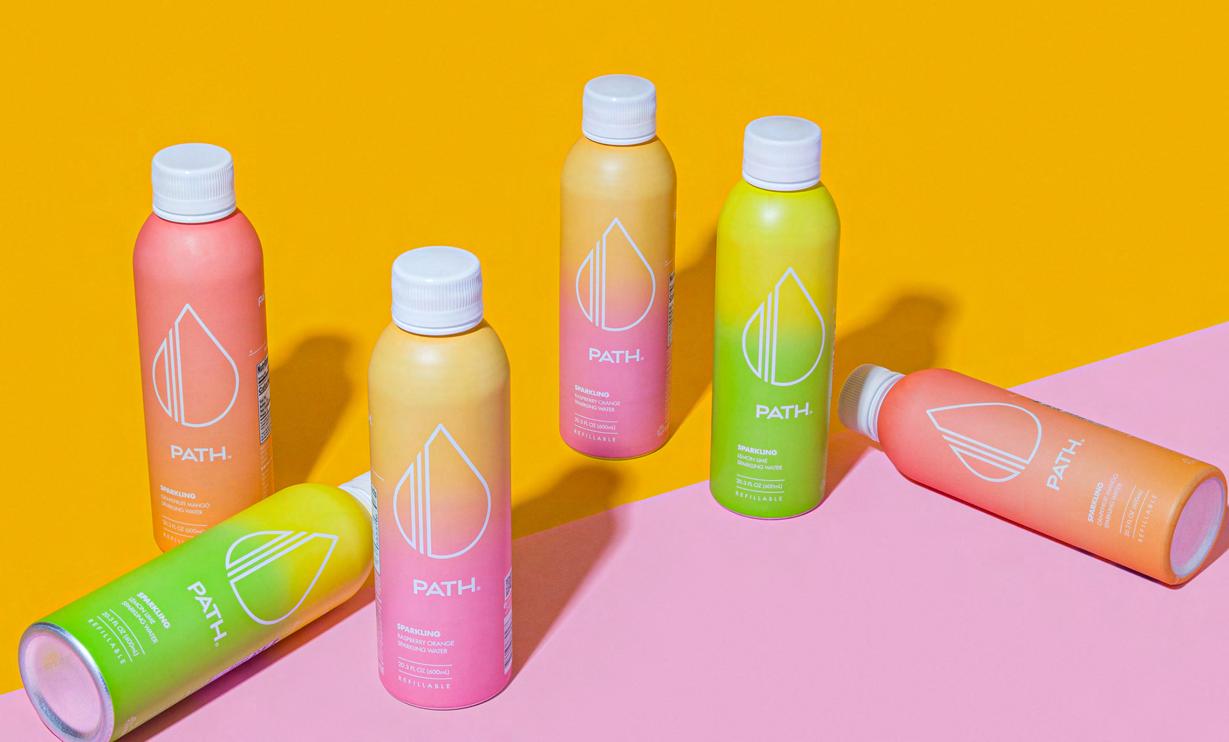
October 28-30, 2024 at PGA National Resort & Spa in Palm Beach Gardens, Florida
Featuring guaranteed buyer meetings, networking and more in a fun and casual setting.
“ECRM has knocked it out of the park for us. We not only get to speak to the buyers firsthand, but actually have appointments with the people who want to talk to us about our brand specifically. They have been a huge testimony to the growth of my company.”
- Molly Blakeley, Owner Molly Bz Inc.




By Rebecca Marquez, Director of Custom Research, The Association for Packaging and Processing Technologies (PMMI)

As the world suffers through heat waves, more frequent and powerful hurricanes, wildfires, and floods, consumer packaged goods (CPG) companies are being pushed by consumers and legislators to reduce their carbon footprint and support a circular economy.
This is prompting greater emphasis on setting environmental, social, and governance (ESG) goals, reducing the use of plastic, especially single-use plastic, specifying recyclable and recycled-content materials, transitioning to renewable materials, adopting compostable packaging, and embracing refill/reuse concepts. Such changes require transparency,

collaboration, and the use of supporting tools like digitalization.
Digital technologies can optimize material usage, reduce waste, and promote recycling and reuse. For example, artificial intelligence (AI) can capture and analyze data to design packaging that delivers structural integrity with minimum resources. Using 3D printing technology to create packaging prototypes generates less waste. Smart packaging with radio frequency identification tags or QR (quick response) codes can provide instructions about proper disposal or recycling of empty packaging, and blockchain technology can deliver the transparency and traceability consumers need to be confident that packaging materials are sourced responsibly and the production process adheres to environmental standards.
Transparent communication about a brand’s sustainability journey is equally vital. Sharing the environmental impact of packaging choices, production methods, and partnerships enables brand owners to build trust with their customer base. Consumers increasingly expect this transparency and are more likely to support companies whose values align with their own.
Corporate ESG initiatives, which extend far beyond packaging, are being adopted by a growing number of CPG companies. Firms with ESG strategies reap many benefits, such as diverting tons of plastic waste from landfills, saving energy, improving productivity, and increasing profits, according to Sustainability and Technology – the Future of Packaging and Processing, a report published by PMMI Business Intelligence, a division of PMMI, The Association for Packaging and Processing Technologies.
The report lists many tactics used to achieve ESG goals including installing new equipment to enable a change to a more sustainable packaging format, adopting renewable energy, minimizing truck transport, and reducing corrugate waste. ESG commitments also include considering end-of-life disposal when designing new packaging and joining efforts such as the Amazon Climate Pledge.
Whatever action is taken, transparency is imperative. Consumers want to know what ESG goals brand owners are setting and what progress is being made. The government wants to know, too. On March 6, 2024, the U.S. Securities and Exchange Commission issued The Enhancement and Standardization of Climate-Related Disclosures: Final Rules, which require some publicly traded companies to include climate-related disclosures in their annual reports starting in 2026. This will necessitate data collection and disclosure about Scope 1 direct greenhouse gas (GHG) emissions by the company and/
or Scope 2 indirect GHG emissions related to the purchase of electricity, steam, heat, or cooling. Deadlines vary depending on the type of registrant. (1)
California and the EU have moved a step further and established requirements for some companies to report Scope 3 GHG emissions from their upstream and downstream value chain. In the EU, the Corporate Sustainability Reporting Directive requires large, listed companies to begin reporting Scope 3

emissions in 2025. California is phasing in its rule, which applies to private and public companies operating in the state that generate more than $ 1 billion in revenue. (2)
Sustainable processes and packaging cannot be achieved in isolation. More companies are now partnering with packaging suppliers to develop innovative solutions that meet both environmental and product protection and preservation goals. Manufacturers, suppliers, retailers, and other stakeholders
work together to optimize designs, explore new materials, and streamline packaging production. Packaging supplier partnerships also help brands understand material availability, ensuring they meet evolving regulatory standards without compromising product quality.
No packaging initiative can succeed without consumer buy-in. Many brands are investing in educating customers about proper disposal practices, recycling protocols, and the environmental benefits of the materials used. Labels often include detailed recycling instructions, encouraging consumers to make responsible choices.
As customers demand products with smaller ecological footprints, many CPG companies are reducing plastic content and/or transitioning from non-recyclable plastics to alternatives like paperboard boxes, biodegradable films, and recyclable plastics. Brands also are shrinking their total packaging footprint through smarter design. Many are exploring using thinner yet durable bags and liners that minimize packaging layers without sacrificing product integrity and lightweighting containers and closures.
To overcome the issue of single-use plastics and reduce the amount of healthcare packaging that is landfilled or incinerated, the Healthcare Plastics Recycling Council is studying how healthcare packaging could achieve circularity via advanced (also described as molecular or chemical) recycling and has published Guiding Principles on Advanced Recycling. (3)
When plastic packaging is chosen, there is greater emphasis on specifying recyclable plastics, ideally with post-consumer recycled content. The ability to be processed and reused in future packaging reduces virgin material use and provides circularity.
Renewable materials, derived from plantbased sources, are being viewed in an increasingly favorable light because they relieve dependence on fossil fuels, and some are biodegradable and/or compostable. Compostable packaging is expected to be one of the fastest-growing formats, according to the Packaging Compass report, produced by PMMI and AMERIPEN.
Although still emerging, the reusable packaging model is gaining traction, particularly for health and beauty and household chemical products. This approach seeks to eliminate single-use packaging by encouraging customers to bring their containers for refills or participate in depositreturn schemes. One early adopter of reuse is Stratus Vineyards, a LEED-certified operation in Niagara-on-the-Lake, Ontario, which launched its super-premium PVMT wine in
reused bottles on Earth Day (April 22) 2024. Circulr, a reuse pioneer in Kitchener, Ontario, collects empties from consumers and the winery tasting room, removes the label, sterilizes the containers, and returns them to the winery for filling. (4)
Some brands are experimenting with deposit-return programs for reusable packaging, where customers pay a small deposit, refunded upon returning the container. These innovative strategies encourage waste reduction but require consumer cooperation and effective logistical networks to succeed.
In Finland, VTT, the University of Vaasa, and 21 stakeholder organizations have initiated Reusify, a 30-month research effort to develop reusable packaging systems. The goal of the project is to reduce packaging, particularly fossil-fuel-based packaging, eliminate packaging waste, and establish a circular economy. “The research will explore various reuse dimensions, including the ecosystems and business models of reuse, the design of reuse systems, circular packaging solutions, and the sustainability scenarios and tradeoffs. Additionally, we will also analyze consumer experience and acceptance,” says Kyösti Pennanen, senior researcher at the University of Vaasa. (5)
Stakeholders also are looking beyond traditional practices and discovering small changes can make a big impact. For example, Three Degrees of Change research by the International Institute of Refrigeration and the Centre for Sustainable Cooling indicates that raising cold-chain temperatures worldwide from 0 F to 5 F would have no impact on food safety or quality but save 25 terawatt-hours per year (the equivalent of 8.63% of the UK’s annual energy consumption), cut carbon emissions by 17.7 million metric tons (the equivalent of removing 3.8 million cars from the roads), and reduce supply chain costs up to 12%. (6)
To help brand owners progress along their sustainability journey, the Institute of Packaging Professionals has developed the Fundamentals of Sustainable Packaging. The course, led by industry experts from CPG companies, will be launched Sept. 10–12, 2024, in Atlanta with an agenda that includes a recycling facility tour
The ability to develop and adopt more sustainable innovations for packaging will reduce carbon footprints, meet corporate ESG goals, satisfy consumer and regulatory demands for less waste and more resource conservation, and help address climate change.
The latest sustainability innovations will be on display at PACK EXPO International (Nov. 3–6, 2024, McCormick Place, Chicago). The new Sustainability Central will serve as an interactive destination with resources to help brands become more sustainable. The PACK EXPO Green program identifies exhibitors that provide technology such as sustainable processes and machines, renewable and biodegradable packaging, source reduction and lightweighting, recyclable and recycled-content materials, or innovations that reduce carbon footprint. Attendees also can identify resources via the PACK EXPO Sustainability Solutions Finder.
As the world’s most expansive packaging and processing industry event in 2024, PACK EXPO International will feature 2,500 exhibitors offering solutions to many of today’s biggest manufacturing needs from an intersection of industries in 40-plus vertical markets. More than 45,000 attendees from CPG and life sciences companies worldwide will converge, searching for innovation, connection, and insight. For more information and to register, visit packexpointernational.com.
• U.S. Securities and Exchange Commission. The Enhancement and Standardization of Climate-Related Disclosures: Final Rules, Fact Sheet, undated.
• Aligned Incentives. Navigating Mandatory Scope 3 Emissions Reporting in the EU, US, and Beyond, April 26, 2024, Navigating mandatory Scope 3 emissions reporting in the EU, US, and beyond - Aligned Incentives, accessed July 4, 2024.
• Sookne, Keren. HPRC Makes Strides Toward Advanced Recycling in Healthcare, Healthcare Packaging, May 14, 2024.
• Stratus Vineyards. Second Time’s the Charm: Stratus Vineyards Launches Its First Wine in Reused Bottles, News Release, May 10, 2024.
• VTT. VTT and University of Vaasa Lead Ambitious Partnership to Build Reusable Packaging Systems in Finland, News Release, June 17, 2024.
• Wayne Labs. Raise Cold-Chain Temps from 0 F to 5 F, Save Energy, and Slash Carbon Emissions, Food Engineering, May 14, 2024.


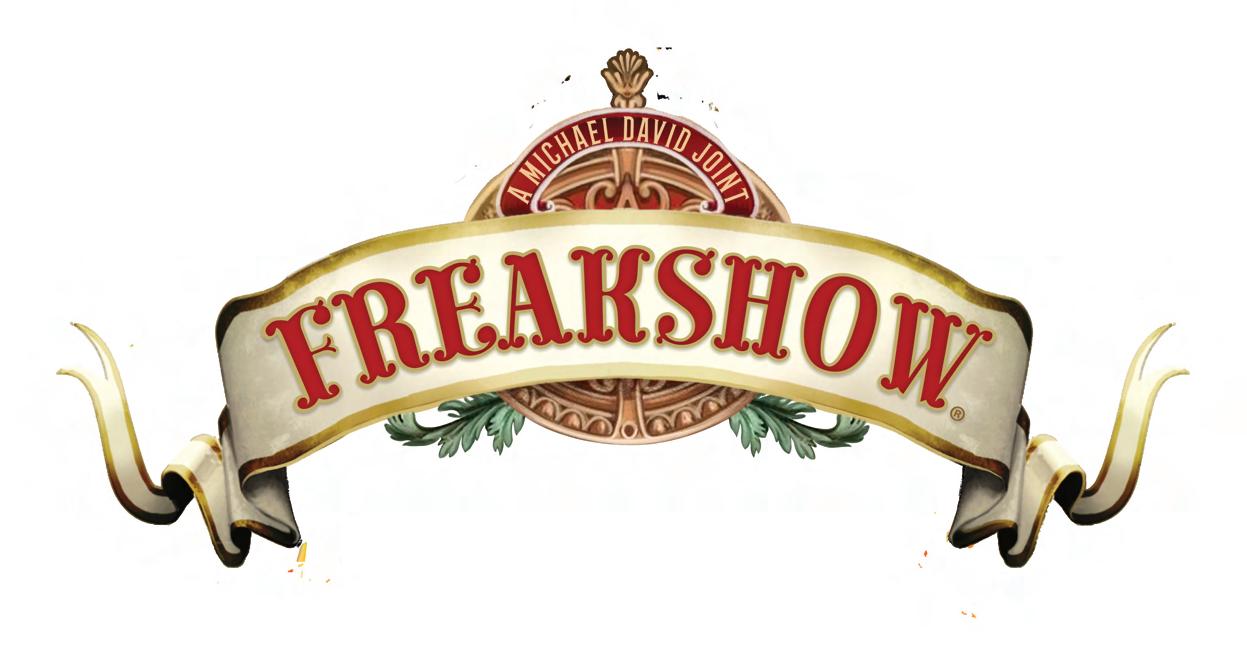



By: Nicole Schumacher, CMO, Pre Brands
Over the past two decades, the increased discussion surrounding climate change has shifted the expectations of a company’s responsibility to minimize its impact on the environment from an optimistic ideology to a primary driver of intent among customers. In fact, a 2023 NielsenIQ report found that more than half of global consumers are willing to pay more for products that are environmentally friendly and sustainably sourced. Needless to say, in 2024, saving the planet has become big business.
Meat remains a hot button issue in sustainability, with ideas ranging from requiring stricter guidelines to promote efficiencies to giving up
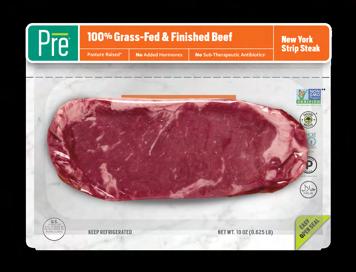
animal protein altogether. For many, eliminating meat isn’t an option for various reasons, but this doesn’t mean that consumers are cavalier about the products they buy. The 2024 Power of Meat study shows that 64% of survey respondents like to know where their food is coming from and 55% try to “do their part” for the environment. They’re looking for a product that is holistically sustainable - minimizing waste for the planet, minimizing health impact to ourselves and minimizing harm to livestock. When it comes to purchasing beef, case-ready meats provide an option for consumers that want to feel good about the sourcing of their product.
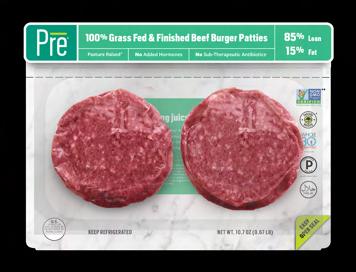

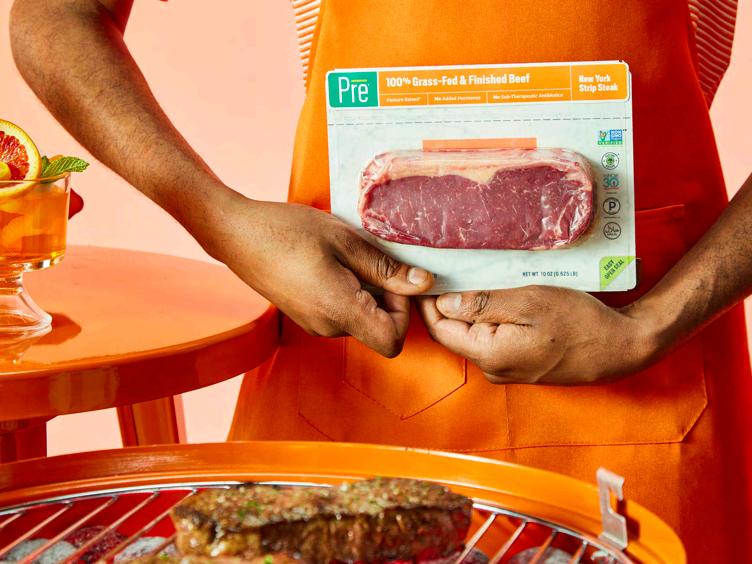
Case-ready meat packaging works harder to minimize the chance of spoilage. Meat counters often use wax paper or plastic sheet wrap which only keeps meat fresh for roughly five days. Compare that to the vacuum sealing of case-ready meat which has a shelf life of two to three times longer and allows the protein to keep fresh in the freezer, minimizing waste. The Power of Meat survey showed that the characteristics consumers seek in meat packaging includes packaging that keeps product fresh longer (57%), is leakproof (56%), freezer ready (47%) and environmentally friendly (36%). Case-ready packaging contains these characteristics making it a more functional option vs. wax paper or plastic wrap options. Taking waste reduction a step further, not only does case-ready packaging keep meat fresher longer, but it also provides pre-portioned servings making it harder for customers to buy more than they truly need.
Case-ready options are also exposed to far less handling than traditional meat counter options. To keep meats looking “fresh,” grocers will often use modified atmosphere packaging (MAP) by pumping a mix of oxygen, carbon dioxide, and nitrogen into the packaging, which, itself, can often contain BPA. In an era where consumers are concerned about exposure to endocrine disruptors, “forever” chemicals and more, it’s easy to see how case-ready meats make a better choice. More handling means also more opportunities for accidental contamination and no one wants a side of E. coli with their burger.
At Pre Brands, we take things a step further with our commitment to sourcing 100% grassfed and grass-finished beef. While consumers are continuing to choose grass-fed as their lean beef of choice, they are not aware that not all “grass-fed” claims are created equal. When traditional diets for cattle include corn as a primary source of feed, some producers can claim to be “grass-fed,” even if the cattle are moved to feed lots and switched to a silage diet (dried grasses or grass-pellets) in the last months of their lives. The moving to a feedlot does nothing to streamline operational efficiencies and promote sustainability. When beef is truly sustainably sourced, cattle graze on lush pastures where nutrient-rich grasses grow year-round for the entirety of their lifespan. Not only does that eliminate transportation and feedlot management costs, but the presence on pasture and rotational grazing can help regenerate grasslands, build soil health and sequester carbon. And, perhaps obviously, it provides a much better life for the cattle.
The Covid-19 pandemic changed the way that consumers buy groceries - with a significant spike in consumers that are increasingly comfortable buying case-ready meat. A staggering 87% of Power of Meat respondents said case-ready is as good or better than meat cut and packaged in the store. Even more enticing? It’s being driven by two groups with enormous buying potential and for whom sustainability is a top priority - Gen-Z and Millennials. Caseready meats deliver a premium product that promotes holistic sustainability - for the planet, for ourselves and for livestock - that everyone can get behind.







Owen Han is a culinary content producer, social media celebrity, and self-proclaimed professional eater based in Los Angeles. Owen has accumulated millions of followers and close to a billion views and impressions across his library of online sandwich-making content. He draws his inspiration for recipes from his Italian and Chinese heritage in conjunction with tireless research on what hungry people all over the world are craving.
Everyone loves a good sandwich, but when was the last time you had a GREAT one? Isn’t it about time your turkey club got an upgrade?
Enter Owen Han, whose epic creations between bread have earned him millions of followers on social media. He’s renowned for dreaming up modern twists to classic recipes (as with his Chipotle Chicken Philly) and working with global flavors inspired by his Italian and Chinese heritage. And in Owen’s book, anything that can be stacked and held in your hand counts as a sandwich—from a taco to a bao to a wrap. Think recipes like:
• Turkey Crunch Sandwich with Frico Crisps
• Hawaiian Breakfast Sandwich
• Snapper Po’ boy with Remoulade
• Peking Duck Wrap
• OG Steak Sando with Caramelized Onion and Aioli

• Crispy and Spicy Eggplant Sandwich
• Bao with Hoisin Pork Burnt Ends
• Lemon-Herb Salmon Burgers with Fennel Slaw
• Salted Brownie Ice Cream Bar
From Breakfast to Dessert Sandwiches, this collection show cases every type of sandwich under the sun (and then some). With easy-to-follow instructions and mouthwatering photos, Stacked is perfect for anyone looking to elevate their sand wich game. Get ready to experience sandwiches like never before with these one-of-a-kind, delicious recipes.
Release Date: October 15, 2024 / Promo Link Here
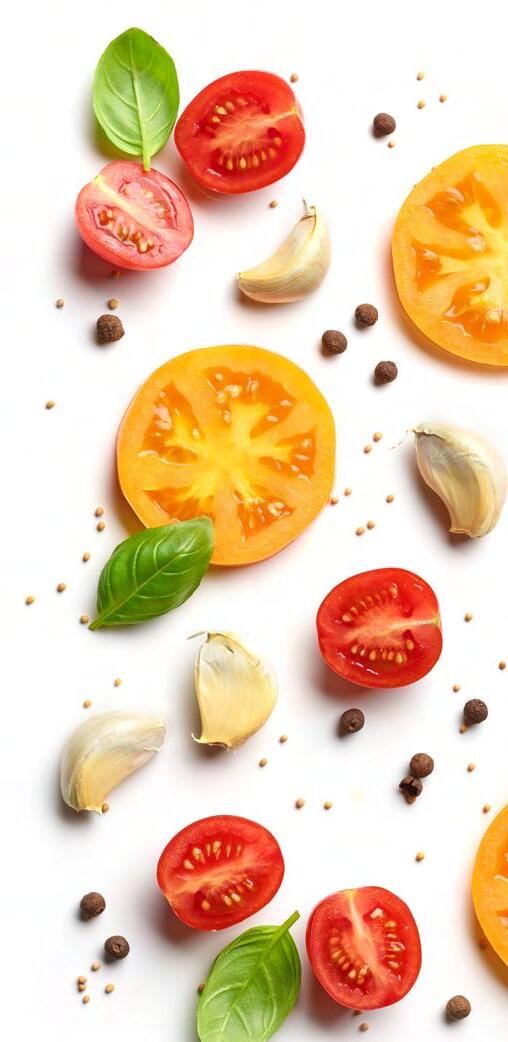
Who would have thought that fried chicken wings would become the most famous thing about Buffalo, New York? You can even buy the spicy coating sauce at the supermarket, but don’t—it is super easy to make at home. If you want to substitute chicken tenders for the sliced chicken, be sure to remove the tendons first. Give the chicken plenty of room in the skillet as it cooks to brown nicely. If you have leftover blue cheese dressing, save it for a salad at another meal.
½ cup/120 ml mayonnaise
¼ cup/40 g whipped cream cheese or room-temperature block cream cheese
3 tablespoons buttermilk
½ teaspoon Worcestershire sauce
¼ teaspoon garlic powder
¼ teaspoon onion powder
½ cup/56 g crumbled blue cheese, such as Danish, Roquefort, or piccante Gorgonzola
Fine sea salt and freshly ground black pepper
Two 10- to 12-ounce/280 to 340 g skinless, boneless chicken breast halves
Make the blue cheese dressing: Combine the mayonnaise, cream cheese, buttermilk, Worcestershire sauce, garlic powder, and onion powder in a medium bowl. Add the blue cheese and process with an immersion blender until the dressing is combined but still chunky. Or mash up most of the cheese with a fork, then stir well to combine. Makes about 1½ cups/360 ml. (The dressing can be refrigerated in a covered container for up to 3 days.)
Make the chicken: Pound each chicken breast half between sheets of plastic wrap with the flat side of a meat pounder until it is about ½ inch/1.25 cm thick. Cut across the grain into slices about ½ inch/1.25 cm thick. Cut the longer slices in half to make strips about 2 inches/5 cm long. Transfer to a large bowl. Sprinkle with the flour, salt, and pepper and toss to coat.
Heat the oil in a large skillet over medium-high heat until shimmering. In two or three batches, add the chicken, shaking off excess flour, and cook, flipping the chicken halfway through cooking, until golden brown and opaque when pierced in the thickest part with the tip of a small sharp knife, about 5 minutes. Transfer to a medium bowl and tent with aluminum foil to keep warm.
Make the Buffalo sauce: Melt the butter in a small saucepan over medium heat. Add the hot sauce, vinegar, Worcestershire sauce, and garlic powder. Whisk well and bring to a simmer. Pour over the chicken and toss well to coat. Mix the celery and 2 tablespoons of the blue cheese dressing in a small bowl to make a celery salad. For each sandwich, spread a split roll with 2 tablespoons of the remaining dressing. Add one-quarter of the chicken and top with one-quarter of the celery salad. Close the roll, cut in half, and serve hot.
¼ cup/35 g all-purpose flour
1 teaspoon fine sea salt
½ teaspoon freshly ground black pepper
2 tablespoons vegetable or canola oil, as needed
BUFFALO SAUCE
½ cup/115 g (1 stick) unsalted butter
¼ cup/60 ml mild hot sauce, such as Frank’s RedHot
1 tablespoon distilled white vinegar
1 teaspoon Worcestershire sauce
½ teaspoon garlic powder
2 large celery ribs, cut crosswise into very thin slices
(a mandoline or plastic slicer work best)
4 soft oblong sandwich rolls, lightly toasted

There is pesto and then there is this pesto. Fava beans and pistachios lend their pastel colors to deep green basil leaves for this beautiful sandwich spread (and it is good tossed with pasta, too). You can find the fava beans at Latino and Italian grocers, but lima beans or even peas are a good substitute. Mortadella takes me right back to my Italian cold cut roots, as it remains my favorite salume, but you can
or use thick focaccia from a bakery.
½ cup/65 g shelled pistachios
½ cup/70 g thawed frozen fava or lima beans, or peas
1/3 cup/35 g freshly grated
pecorino Romano cheese
1 cup/30 g packed fresh basil leaves
2 tablespoons fresh lemon juice
2/3 cup/160 ml extra virgin olive oil, plus more for storage
Fine sea salt and freshly ground black pepper
6 ounces/170 g thinly sliced mortadella
½ cup/130 g stracciatella (see Note)
Freshly ground black pepper
1 lemon, cut in half
MAKE THE PISTACHIO PESTO: Bring a medium pot of water to a boil over high heat. Add the pistachios and boil for 2 minutes to loosen their skins and set the green color. Drain and rinse under cold running water. Pinch off as many of the brown skins as you have patience for; you do not have to do them all.
Pulse the pistachios, beans, and cheese a few times in a food processor until chopped. Add the basil and lemon juice and pulse again to chop the basil. With the machine running, gradually pour the oil through the feed tube. Season with salt and pepper. Transfer to a covered container. Top the pesto with a thin layer of oil to cover and seal the surface. Makes about 1¼ cups/345 g. (The pesto can be refrigerated for up to 1 week. Stir well before using.)
For each sandwich, spread the cut sides of the schiacciata with about 3 tablespoons of the pesto. Fold and layer the mortadella on the bottom half. Top with half of the stracciatella, add a few grinds of pepper, and squeeze the juice of a lemon half on top. Close the sandwich, cut in half, and serve.

CONTINUED...
Note: Stracciatella (which means “little rag” or “little shreds” in Italian) is a soft, spreadable fresh cheese made from stretched and shredded mozzarella curds and heavy cream. When this mixture is wrapped inside a mozzarella ball, it becomes burrata. If your cheese vendor sells burrata, they might also have stracciatella, but if you can’t find the latter, just chop up a burrata ball, filling and all.
I fulfilled a bucket-list desire when I got to shoot a video at the New York outpost of the beloved Italian sandwich shop All’Antico Vinaio (At the Old Winemaker), which I already knew from their shop in Florence. I learned a lot about panini from them and one game-changer was their bread, called schiacciata (“smashed” in Italian, for the dimpling of the dough), the Tuscan version of focaccia. I make an easy, noknead dough that bakes up thick and fluffy, ready for splitting into layers to hold your favorite cold cuts. This is a very wet dough, and the high moisture allows you to skip kneading and the long fermentation creates a very light and airy flatbread. Because the dough needs to rise at least overnight, you can have it ready in the morning to bake for lunch. Leftovers freeze well.
5½ cups/805 g bread flour
1 tablespoon instant yeast (also called quick-rising or bread-machine yeast)
2 tablespoons extra virgin olive oil, plus more for the bowl, baking sheet, and drizzling 2¼ teaspoons fine sea salt
Flaky sea salt, such as Maldon (optional)
1. At least one day before baking, stir the flour, 2¾ cups/660 ml water, the yeast, oil, and fine sea salt together in a large bowl to make a wet, sticky dough without any dry bits. Scrape down the sides of the bowl. Be sure to use a bowl large enough to hold the doubled dough. Cover with plastic wrap or a wet kitchen towel and let stand for 10 minutes.
2. Using a hand rinsed in cold water, grab the dough at the 12 o’clock position and stretch it above the rest of the dough by about 8 inches/20 cm. Fold the stretched dough over to the center of the remaining dough in the bowl. Working around the bowl at the 3, 6, and 9 o’clock positions, repeat the stretching process. The dough will get slightly firmer after each stretching. Cover with plastic wrap or a wet kitchen towel and let rest for 10 to 15 minutes. Repeat the process around the bowl for a total of four times, covering and resting for 10
to 15 minutes after each, for a total of four stretching processes over about an hour’s time. After the last stretching, tightly cover the bowl with plastic wrap. Refrigerate the dough for at least 12 hours and up to 3 days (really, the longer the better, but don’t obsess over it).
3. Generously grease the bottom and sides of a half-sheet pan with oil. Line the bottom of the baking sheet with parchment paper, then flip the paper over so the oiled side is up.
4. Scrape the moist and sticky dough into the prepared pan. Using oiled hands, pat and stretch the dough to fit the pan as much as you can. Brush or drizzle the top of the dough with oil and loosely cover with plastic wrap. Let rest for 5 to 10 minutes to relax the gluten in the dough. Continue patting and stretching the dough under the plastic into an even layer, being sure it fills the corners of the pan. (If the dough still retracts, give it another few minutes’ rest and try again.) Let it stand in a warm place (such as a turned-off oven with the door ajar so only the light is on; the ideal temperature is 75º to 80ºF/24º to 26ºC) until the dough doubles and reaches the top edge of the baking sheet, 11/2 to 2 hours.
5. Position a rack in the center of the oven and preheat the oven to 400ºF/200ºC. (If the schiacciata is rising in the oven, don’t forget to remove it first!)
6. Using your fingertips, stipple with ¼-inch (6 mm) deep “dimples” all over the top of the dough. Drizzle with olive oil to pool a little in the dimples. Sprinkle the top with flaky salt, if using. Bake until the schiacciata is golden brown, about 30 minutes. Let it cool for 10 minutes. Slip the dough on its paper out of the pan onto a chopping board and discard the paper. Let cool completely. Cut the schiacciata into six 6 × 5-inch/15 × 12.5 cm rectangles. (For smaller panini, cut into 8 portions.) The schiacciata is best the day of baking. (Or double wrap each portion in plastic wrap and freeze for up to 3 months. Thaw at room temperature before using.)

MAKES 6 SANDWICHES
This concept came to me one day, and I could hardly wait to get into the kitchen to try it out. The pork belly cooks low and slow to yield caramelized nuggets of melt-in-your mouth pork in a terrific Asian-inspired sauce. This cut shrinks a lot during cooking, so don’t be surprised. Served as a Vietnamese sandwich with pickles and cilantro and cucumber to add freshness, it is even better than I had imagined.
2½ pounds/1.2 kg pork belly, skin removed
2 tablespoons light brown sugar
2 tablespoons five-spice powder
1 tablespoon onion powder
1 tablespoon fine sea salt
1 teaspoon freshly ground black pepper
½ cup/120 ml reduced-sodium soy sauce
¼ cup/60 ml hoisin sauce
¼ cup/60 ml honey
2 tablespoons unseasoned rice vinegar
1 tablespoon toasted sesame oil
MAKE THE PORK BELLY BURNT ENDS: Preheat the oven to 300ºF/150ºC.
Cut the pork belly into 1- to 2-inch/2.5 to 5 cm cubes so that each piece includes a strata of meaty and fat layers. Transfer to a large bowl. Mix the brown sugar, five-spice powder, onion powder, salt, and pepper in a small bowl. Sprinkle over the pork and toss well to coat. Spread the pork in a 9 × 13-inch/23 × 33 cm metal baking pan, preferably nonstick. Cover tightly with aluminum foil.
Bake for 1¼ hours. Remove the foil, stir the pork, and increase the oven temperature to 350ºF/180ºC. Bake until the pork is dark brown and tender when pierced with the tip of a sharp knife, about 30 minutes. If the pork seems to be getting too dark, tent the pan with aluminum foil.
Whisk the soy sauce, hoisin sauce, honey, vinegar, sesame oil, ginger, and garlic in a large bowl. Drain the pork in a colander, discarding the fat. Add the pork to the sauce and mix well to coat. Return the sauced pork to the pan.
Return to the oven and bake, stirring occasionally, until the sauce is reduced into a dark glaze and the pork has crisp edges, about 15 minutes. (If you want the pork even more crisp, broil it in the pan for a few minutes.) Remove from the oven. Divide the pork and sauce into 4 servings.
For each sandwich, spread the roll with 2 tablespoons of mayonnaise. Spoon a portion of the pork and its sauce on the bottom. Add a few slices of jalapeño, a scattering of the drained pickles, a few cilantro sprigs, a few cucumber slices, and a sprinkle of scallions. Cap with the roll top and cut in half. Serve immediately with the lime wedges.
NOTE: BANH MI
Vietnam may seem an unlikely place to be famous for its sandwiches, but then again, that only proves the universality of food between bread. Banh mi literally means “wheat bread” in Vietnamese, but what originally referred to only a loaf of bread over the years came to refer to the entire sandwich. More than a century of French colonization brought the baguette to Vietnam, with the Asian version evolving to be more tender than its European counterpart. Besides the rolls, my recipe includes other touchstones of a great banh mi, such as tangy pickles, crunchy cucumber, and fresh hot chiles, for an interplay of textures and flavors. One thing I left out, but many purists may want on their sandwich, is a schmear of liver pâté. Purchase the canned version at a specialty market or happily settle for some liverwurst from the deli, seasoned with a pinch of five-spice powder.
1 tablespoon grated fresh ginger
3 cloves garlic, minced
4 oblong, thin-crusted French or Italian rolls, split lengthwise
½ cup/120 ml mayonnaise, preferably Kewpie
1 jalapeño chile, sliced into thin rounds, loose seeds shaken out Asian Pickles for Banh Mi (BELOW), drained – or sub any pickle
Fresh cilantro sprigs
½ seedless (English) cucumber, cut into thin rounds
2 scallions, white and green parts, thinly sliced
2 limes, cut into wedges
Makes 1 pint/480 ml
Special equipment: Mandoline or plastic slicer
1 small carrot, peeled
¼ small daikon (about 6 ounces/170 g), peeled and halved crosswise ¾ cup/180 ml unseasoned rice vinegar 2 tablespoons sugar
1½ teaspoons fine sea salt
Using a mandoline or plastic slicer, cut the carrot and daikon into strips about 1/8 inch/3 mm wide and 2 inches/5 cm long. You want about 1½ packed cups/160 g julienned vegetables. Put the vegetables in a 1-pint/480 ml jar or covered container. Bring the vinegar, ¾ cup/180 ml water, the sugar, and salt to a boil in a small saucepan over high heat, stirring to dissolve the sugar. Pour over the vegetables and let cool. Use immediately or cover and refrigerate for up to 2 weeks.




By Laine
Leticia “Leti” Fernández de Mesa’s journey as a spirits maker started as naturally as the flowers that inspired her.
An art history graduate, the Spanish-born Mesa started her career at the flagship location of prestigious art auction house, Sotheby’s before returning to Madrid to continue her career at gallery, Distrito 4. Spain proved to be both good in business and love when she met her husband Iñigo Torres.
The couple honeymooned in Colombia, fell in love with its natural beauty, and decided to move there. They opened an auction house in Bogota, specializing in contemporary art. “That was a very important platform that did not exist in the art world. It was a major step not only for Colombia, but for the region, says Mesa.
In their spare time, they would explore the countryside outside of Bogota. “This is where our fascination with the natural world all started,” says Mesa, who started researching the glorious flora of the region – especially the edible flowers that grew there in abundance. To Mesa, the flowers were just another extension of her love of art, and she started experimenting with different infusions and tinctures made with the edible flowers she collected. “I’ve always been a perpetual seeker of beauty in different ways,” she says, adding, “What if you can sip on beauty?”
At first, Mesa created infusions in her kitchen, using friends as taste testers. After working with countless flowers, she discovered the begonia.
There are more than 1,000 species of begonias and when they’re out in nature they have no aroma. But, when you infuse the begonia, it
- Founder Leticia Fernández de Mesa




“There are more than 1,000 species of begonias and when they’re out in nature they have no aroma. But, when you infuse the begonia, it comes alive. It’s truly a magical flower. This is what changed everything,” she recalls.
After enjoying at-home martinis infused with the intoxicating scent of begonias, Mesa had the idea to incorporate it directly into a spirit. “The idea was to figure out how to share this discovery and showcase these flowers into a drinkable essence.”
Mesa knew that vodka had to be the base spirit for the liquid. “Vodka is the purest of the spirits and we believe it’s the best vehicle to showcase these flowers. The principle is that only the purest vodka can respect the purity of the flowers.” Mesa and her husband spent four years trying to perfect the base liquid, trying hundreds of vodkas before coming up with a liquid eight times distilled from Florida corn (a nod to the distillery’s South Florida location). Mesa also chose to distillate the vodka to 70 proof, rather than the industry norm of 90 proof. “It’s more of a flavor issue,” says Mesa, adding that the slightly lower proof allows the floral notes to stand out.
Finally, Mesa worked with a team of scent makers from France for the floral infusions. “At first, we used actual flowers, but we simply could not grow enough. We then turned to the same French essence makers who create some of the finest scents in the world.” Mesa knew that the angel begonia, which had previously never been used in a spirit would be the star, but needed other notes to balance it out. She finally came upon the perfect formula:
“The begonia is first, then we compliment it with brightness from the orange blossom. Finally, we add vanilla flower to add sweetness and depth.”
The result is a blush-tinted liquid that’s fresh and floral. To crown the bottle, Mesa designed a red crystal flower as a stopper and named the creation UNA. “It means ‘unique and singular’ – just like the experience you’re going to have when you sip on it,” says Mesa, adding, “UNA is a way to blend the beauty I found in Latin America and a way to tell that story of discovery.”
Mesa launched UNA in 2022. Although it technically falls into the flavored vodka category, she says it’s a million miles away from many artificially sweet spirits. “If I had to describe it, it’s a refined, sophisticated experience with a clean finish.” Mesa adds that, for centuries, people have been drinking spirits infused with florals and herbs, but this is a new way to marry them together.
Mesa’s favorite way of drinking UNA is in a simple martini. “I just shake UNA with ice until chilled and pour into a cold martini glass, garnished with a flower.” She adds that it’s magnificent in a lychee martini. “The lychees work so well with the floral notes.” The UNA creator says the most fun part of her job is having bartenders experiment and come up with their own recipes. “I like to say UNA is the perfect canvas for cocktails.”
Florals are trending now, with cocktails made with violets, elderflower, and pea flowers showing up at lounges throughout the world. Mesa says she now sees flowers everywhere. “I see flowers in fashion, I see flowers in pastries. I had the chance to be in New York in June and the storefronts were blooming with flowers. It is amazing. Flowers are in our lives in the good moments and even the sad. We all connect with flowers.”
Right now, UNA is available in liquor stores in Florida, Texas, and California. In addition, it’s available online nationwide at unavodka.com Mesa says that she’s hoping that UNA will soon grow as bountiful as the lush countryside in which it was born. “I like to tell people that giving the gift of UNA is like giving flowers you can drink. Each sip tells a story of adventure and exploration.”
From art world insider to running a boutique distillery may not seem a straight path, but when looked at in retrospect it almost seems obvious that Leticia Fernandez de Mesa would transform herself from a successful art dealer to the creator of one of the United States’ most uniquely flavorful and aesthetically pleasing vodka brands: UNA Vodka.
Born in and raised in Spain, Leti (40) learned “the joy of discovery” from her parents. Whether that joy be found in building or designing something (her father) or in reading or research (her mother), the two avid travelers instilled in Leti at a young age the inspiration to seek out “beauty,” in her life, especially when it came to the natural world. While studying art history at university in Madrid, Leti scored a prized internship at Sotheby’s Madrid, her passion for the art world cemented. Later, Sotheby’s offered the young graduate a position in New York, an opportunity she jumped on. It was there that her professional life took off, the internship turning into a full-time position– first in VIP relations and then in auctions. Circa 2006, with the art market booming, Leti got a world class education on both the aesthetic and business sides of the art world, a perspective that she had no idea would come greatly into play when she would launch UNA Vodka in 2022. She returned to Madrid in 2010, to continue her education with a role at a foremost art gallery, Distrito 4.
“For five years I learned everything I could and did as much as they would trust me with,” she recounts, waxing nostalgic about the tempestuous European art market, the joys and trials of organizing and producing exhibitions and representing groundbreaking artistic talents. In YEAR, with her husband, fellow intrepid adventurer Iñigo Torres, Leti relocated from their native Spain and to Colombia, which the duo fell in love with during their honeymoon. “It was the jungles that got us,” she quips. “We had never seen such lush and gorgeous plant life. The flowers, the colors. It was the beauty of the place that we connected with.”
Both avid cocktailers, the newly-minted couple began a self-guided education on Colombian flora, picking flowers of all kinds to take back home and experiment with. Both martini lovers, they rendered their homemade begonia essence into their nightly tipple and voila! It was the magical combination of vodka and begonia essence that sowed the seeds for UNA Vodka. Flash forward to 2018 and, having sold the auction house, the duo have relocated to Miami – a suitcase of homemade floral essences in hand. The decision to build something new together, led to the birth of UNA Vodka. They quickly secured a distiller, and began designing the receptacles for their “magic in a bottle,” testing and ordering bottles and designing its signature, keepsake worthy glass stopper.
The first batch of 2000 bottles are produced and begin appearing in stores and select bars and lounges. Based in Miami with robust distribution throughout Florida, Texas and California – with more markets on the horizon – UNA Vodka is a 100% pure America corn vodka infused with natural flavors and colors rendered painstakingly from begonias, orange blossoms and vanilla flowers. This sophisticated, handmade luxury vodka – 70 proof so as not to diminish Una’s signature flavor profiles – is unlike anything else on the market in both style and substance. Sporting a keepsake worthy glass flower stopper, it’s not an exaggeration to call the vodka Leti created in her home and is now producing 30,0000+ a drinkable work of art. And art is where it all started.
“Much has changed from that first run,” she reflects, recalling meeting personally with potential customers, “pregnant as hell” with her second child with a car full of vodka and collateral crammed next to her first daughter, Rafaela’s, car seat. “Back then every bottle sold or placed on a shelf was a success but I can honestly say that ethos still drives me today,” she adds.
And though Leti still cherishes being out in the field meeting current and potential clients she now has a talented team that supports her including a new director for the brand ambassador program UNA s launching. So, what is on the horizon for the vodka brand inspired by the lush Colombian jungle? “Growth into New York and the Caribbean is our next goal,” offers Leti, “as well as cementing our standing nationally as a premier unique vodka.”
For more information visit www.unavodka.com
Sample bottles and interviews upon request.
Media Contact: Brustman Carrino Public Relations unavodka@brustmancarrinopr.com (305) 573-0658
Credit: @fabiarodi / Magiclandscape


Miami-based
750 ml glass bottle, gorgeously designed by Leti herself
Suggested retail: $38.99
35% APV / 70 proof
Distilled eight times and bottled in Florida
Crystal clear with a lush pink hue. Nose filled with the scents of exotic flowers, vanilla, and subtle citrus accents. Medium-bodied and super delicate with a faint sweetness that gives it an unexpected but pleasant and gin-like quality.
As lovely sipped as it is in cocktails. Suggested recipes can be found HERE.


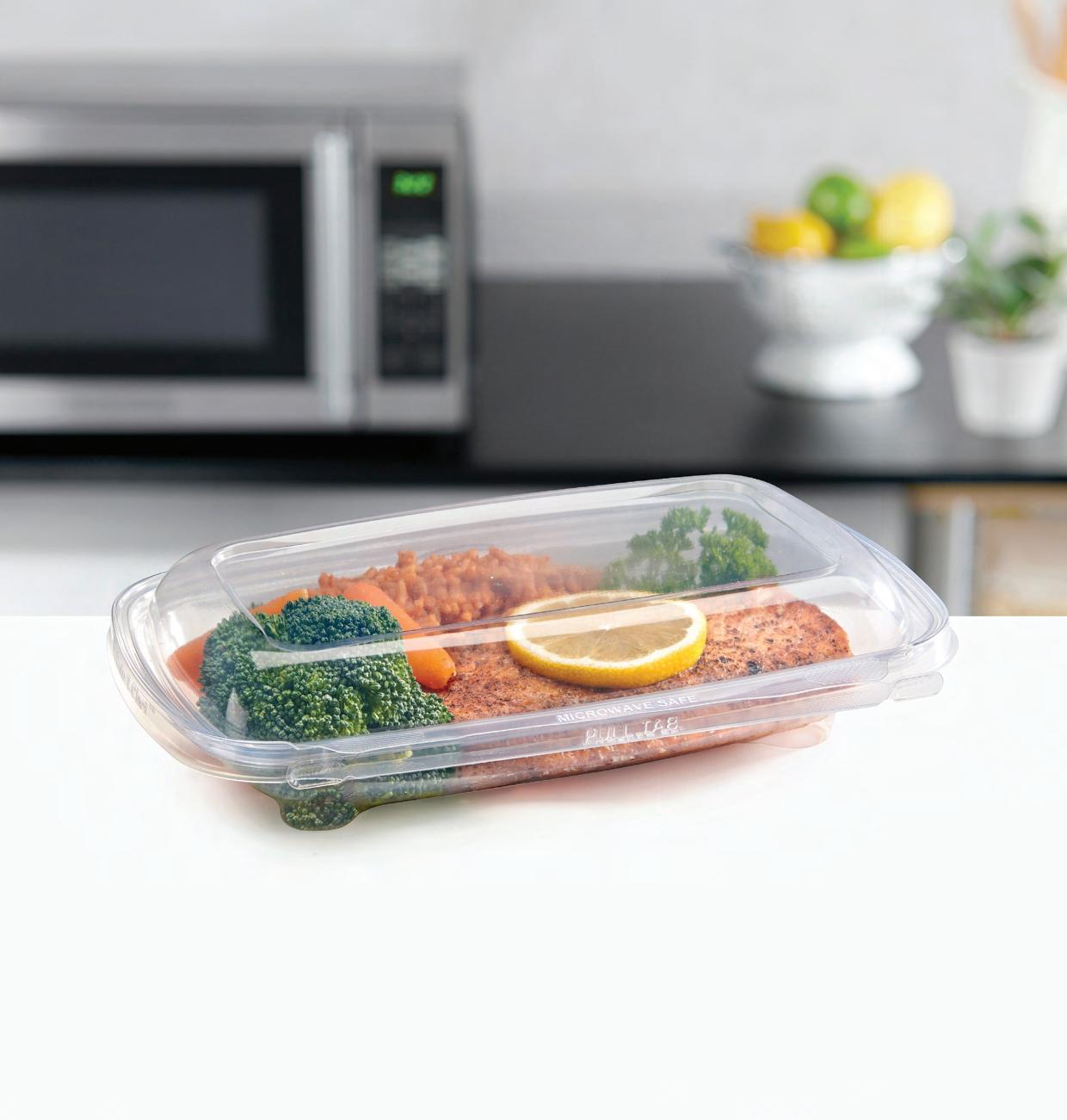

Tamper Protection
Proven patented technology gives consumers confidence that food has remained sealed. Great for delivery!
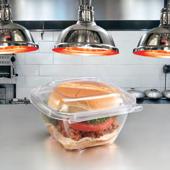
Full Transparency
Exceptional clarity because shoppers like to see the food they buy.

Sustainability
You will be ready as the shift away from black carbon plastics continues.
We strongly recommend that customers test products under their specific conditions to determine fitness for use.
Scan to learn more

The Pizza Skillet Social features nostalgic inspired cocktails created with Absolut Vodka, Codigo 1530 Tequila and Beefeater Gin, curated by Thunderbolt mixology. The specialty drinks include the Arctic Surge with Absolut Citron, Hawaiian Milk Punch with Codigo 1530 Tequila, and the East-Side Salad with Beefeater Gin. An orange-flavored mocktail, California Dreamsicle, is also offered boozy with Codigo 1530.
Skillet pizzas wowed guests such as a Bolognese flavor and Fried Pickle Ricotta pizza, inspired by Pizza Hut’s signature pan style, served paired with CHAIN’s original award winning
buffalo chicken tender bites, all created by renowned chef Tim Hollingsworth.
Guests at the Pizza Skillet launch included VIPs such as actor/ producer Joel Michaely, The Gentleman on Netflix’ Harry Goodwins, Dave on FX’ Gata, influencers such as Madison Brodsky, Hannah Linderman, Erin Ziering, Kinya Claiborne, Gabriella Ellis, Vanessa Ochoa, top food influencers and more were in attendance for the kick off weekend of the pop-up August 9th and 10th, which soft launched on the August 8th with “Hot Girls Eating Pizza” by Air Milkshake.
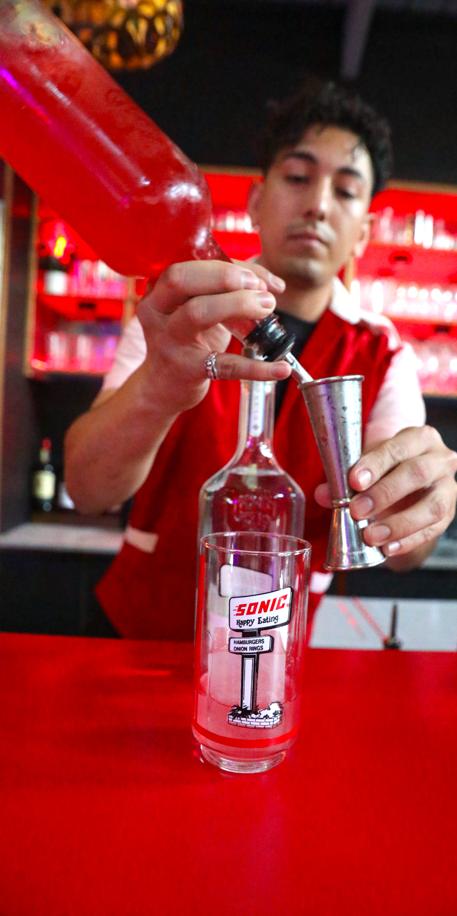
Skillet pizzas wowed guests such as a Bolognese flavor and Fried Pickle Ricotta pizza, inspired by Pizza Hut’s signature pan style, served paired with CHAIN’s original award winning buffalo chicken tender bites, all created by renowned chef Tim Hollingsworth
CHAIN is the World’s First Gourmet ‘Chain Food’ pop-up featuring Chef-driven versions of chain restaurant classics like Friendly’s, Pizza Hut, McDonald’s, Chili’s and more with incredible interactive and retro inspired elements throughout the space to every age guests and consumers, founded by actor BJ Novak of The Office and notable Chef Tim Hollingsworth.
Chain started as a pandemic-era pop-up in 2022 and kept growing in popularity. Seeing the concept catch on so quickly, the founders realized that they needed a bigger space where people could regularly bond over shared memories of Pizza Hut’s Tiffany-style lamps or passion for Pac-Man. Hence, CHAINHouse’s new permanent home was born on LA’s East Side in a 7,500 Square foot space. Events are invite-only, extended to their 30,000+ waitlist.
Next is their CHAINFest in Los Angeles taking place in October.
Follow @eatatchain @absolutUS @beefeatergin @codigo1530
Photos by Kevin Wong


By Ryan Slattery
Studies show that more than half of American students rely on school meals to meet their daily nutritional needs. Absent these essential meals—including dairy products like milk, as well as whole grains, fruits, vegetable, and lean protein -- many of these children would go hungry, negatively impacting their ability to learn as well as their overall development and growth. A hungry child will lack focus and have a much lower attention span.
The numbers are staggering. Nearly 30 million children— over 60 percent of all students—rely on school meals for
a significant amount of their daily nutrition. One in five students is food insecure and for Black, Indigenous and Hispanic students that number is even higher. According to the USDA, the number of children living in food insecure households has increased 45 percent since 2021 alone.
With school budgets teetering and many districts short of funds, national non-profit GENYOUth, founded by America’s dairy farmers and the NFL with the mission of ensuring schoolchildren thrive by living well-nourished and physically active lives, is committed to providing meal


delivery solutions to schools to increase access to and participation in school meals.
“School meals are the largest safety net for hungry children, and a recent Tufts University study confirms that they provide the healthiest meals kids consume. However, barriers like time constraints and stigma limit student access to and participation in school breakfast programs. We must ensure that all students have the nutrition they need to thrive both in the classroom and beyond,” said Ann Marie Krautheim, CEO of GENYOUth.
“Schools are now the single healthiest place Americans are eating,” said Dariush Mozaffarian, dean of the Friedman School and senior author of the study. “Our results suggest substantial nutritional harms for millions of kids who have not been consistently receiving meals at school and must rely on other sources. These harms also disproportionately affect low-income, Black and Latinx children.”
GENYOUth works with school districts across the nation to provide equipment to support innovative and alternative approaches to school meals, including Grab and Go, which has been proven to increase average daily school meal participation by as much as 58%. Other proven methods include Breakfast in the Classroom and Second Chance breakfast.
“With schools urgently seeking resources to promote nutrition equity and food justice, we invite dedicated individuals to join us in our effort to end student hunger. Together, we can ensure that the only hunger a child feels is the hunger to learn.”
Krautheim
With the support of philanthropic-minded partners, GENYOUth raises critical funds to help end student hunger. One of its most ambitious initiatives is its annual Taste of the NFL event, a collaboration with chefs and athletes, held each year in the Super Bowl’s host city. The popular culinary and charity event raised $1.8 million in Phoenix in 2023 and $2 million last year in Las Vegas in 2024. The funds raised from the event since its founding in 1992 have helped benefit more than 1,000 schools and 550,000 students providing access to 148 million school meals for students in all 32 NFL club markets.
And planning is now underway for Taste of the NFL on February 8, 2025, in New Orleans. To kick off GENYOUth’s commitment to the NOLA community, it is launching Super School Meals, a high impact purpose driven initiative that will provide Grab and Go school meal equipment grants to schools throughout Louisiana.
Concludes Krautheim, “With schools urgently seeking resources to promote nutrition equity and food justice, we invite dedicated individuals to join us in our effort to end student hunger. Together, we can ensure that the only hunger a child feels is the hunger to learn.”
For more information on how you can help, visit genyouthnow.org.






By Melkon Khosrovian, co-founder & spiritsmaker of Greenbar Distillery
Greenbar, one of America’s oldest and largest craft distilleries, has had many firsts in sustainability. It was among the first to embrace certified organic production and lightweight, recyclable packaging 16 years ago. The next year, it also committed to planting a tree for every bottle sold, with 1.1 million trees planted to date. All this trailblazing soon led to commissioning and publishing third-party studies to measure the full carbon footprint of its products, as well as the carbon absorption and offsetting of the trees planted.
Today, the company makes the largest portfolio of sustainable, certified organic adult beverages in the world.
As younger generations who prioritize sustainability come of drinking age and on-premise operators seek to earn their business with weightier sustainability mandates, here are some lessons learned along the way that can help beverage directors make more practical sustainability choices.
Based on Greenbar Distillery’s carbon footprint analysis and the few others that have been published more recently, there is a clear pattern of high, medium and low sources of carbon emissions. The biggest culprit is packaging and transportation, followed by ingredients and energy, and, finally, storage and end of life (recycling/dump).
LOOK FOR:
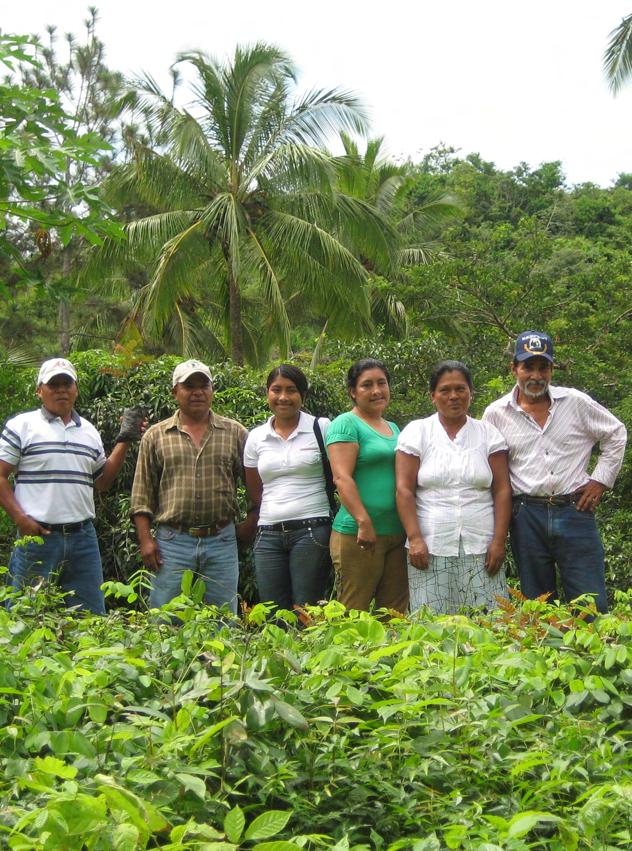


1. Third-party studies…even if you trust your company rep. You need to compare apples-to-apples in order to make the best choices.
2. Complete life cycle information on the product you’re buying…from cradle to grave. Many companies study just their part of a product’s life cycle and omit the production and transport of raw ingredients and packaging, along with the transportation, storage and disposal of the final product. This makes them look good, but hides the full impact of what you’re buying.
Since few, if any, brands have conducted or published life cycle analyses, work top down and look for signs of pollution that you can gauge yourself: weight and distance. Choose spirits, liqueurs and mixers that come in lightweight bottles with minimal decoration (no frosted glass or metallic ink) and travel a relatively short distance to your location.
Also, ignore greenwashing that tends to repackage
age-old practices, like selling spent grain to feed livestock or sourcing water from local aquifers. These are just givens.
Organic ingredients over deliver on sustainability goals by preventing the degradation of the farmlands and watersheds that sustain us. As an added bonus, because organic farming relies on healthier plants that can fend for themselves, everything just tastes better!
Greenbar learned this through a happy accident four years into its operations when a box of produce was switched from conventional to organic. The stronger flavors and aromas threw off the balance of well-honed recipes and, as the saying goes, the rest is history. Greenbar embraced organics initially for quality and then later for sustainability.
If you want to make the best possible cocktails that are also sustainable, consider organic ingredients as twofers. Most cost almost the same as their conventional counterparts, so they won’t impact your pour costs.
Sustainability isn’t why any of us got into this business. We love delighting customers through our craft. At the same time, sustainability can be quite intuitive and simple once we understand the basics.

SUGGESTION: Seek out USDA certified organic spirits and liqueurs, especially the latter, as they tend to deliver brighter, more life-like flavors.
Just as it’s impossible to lift yourself off the ground by your bootstraps, no company can achieve a net zero or negative carbon footprint by streamlining its operations. One way or another, offsets must play a role. But companies need to use offsets in combination with diligent efforts to cut back as much as possible, not just pollute and buy forgiveness.
Greenbar chose to plant trees through a reputable non proft because the trees serve a dual purpose — they absorb CO2 and provide shade for crops like cofee and cacao.

Greenbar chose to plant trees through a reputable non profit because the trees serve a dual purpose — they absorb CO2 and provide shade for crops like coffee and cacao. The latter ensures that farmers protect the shade trees, which can keep sequestering CO2 for 50-100 years.
SUGGESTION: Look for good faith efforts from brands to reduce their carbon emissions in meaningful ways (especially in the areas of packaging and transportation) along with verifiable, measurable offsets.
Sustainability isn’t why any of us got into this business. We love delighting customers through our craft. At the same time, sustainability can be quite intuitive and simple once we understand the basics. Some aspects of sustainability, namely organic, can actually improve cocktails and customer satisfaction!
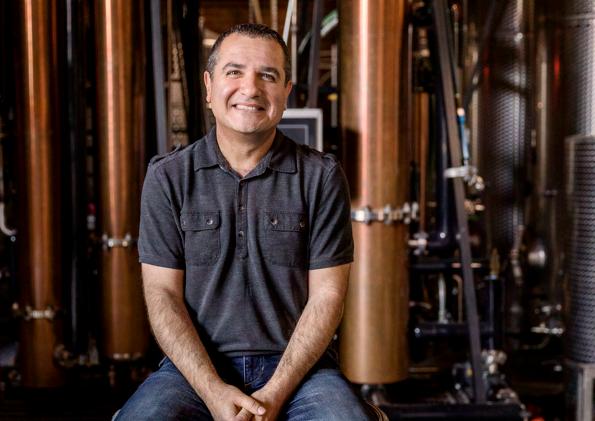



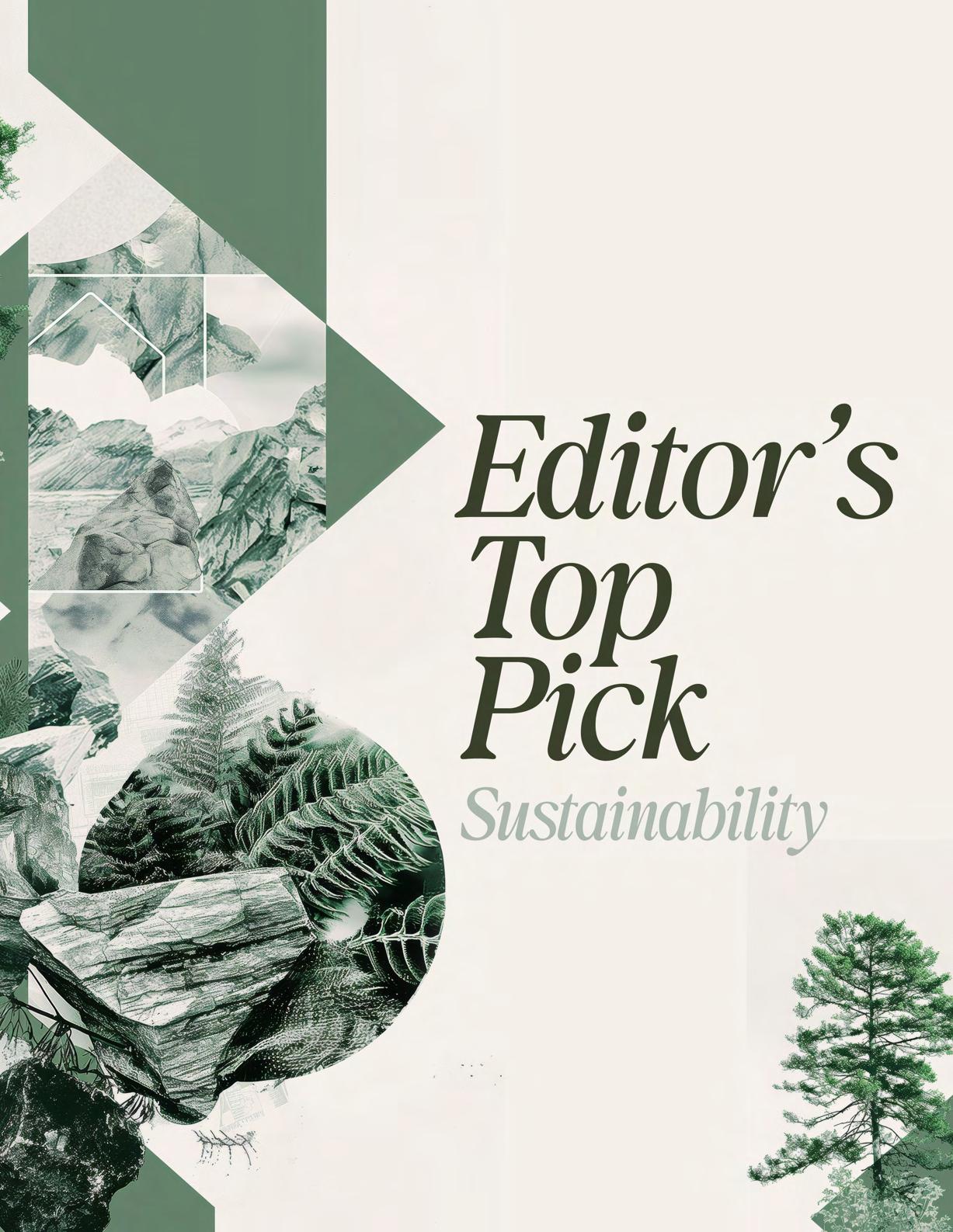

Admiral Craft’s Black Diamond Energy Star Rated Commercial Deep Fryer is a game-changer for sustainable kitchens. Designed with energy efficiency at its core, this fryer uses advanced cast iron burner technology to deliver powerful, consistent heat while consuming less natural gas than traditional models. Not only does this reduce your kitchen’s carbon footprint, but it also lowers operational costs without sacrificing performance. The all-stainlesssteel construction ensures durability and longevity, further enhancing its ecofriendly appeal. With a 35-lb capacity and precise temperature controls, you can fry a variety of foods with confidence, knowing you’re making a choice that’s good for both your business and the planet. The Black Diamond Fryer is more than just a kitchen appliance—it’s a commitment to sustainability.
Archer Roose’s Pinot Grigio, sourced from the renowned Friuli Venezia Giulia region in northeastern Italy, reflects the brand’s dedication to sustainability. This light, refreshing white wine captures the essence of its coastal origins while being packaged in eco-friendly cans that reduce the carbon footprint. Archer Roose is committed to protecting the environment by using environmentally conscious packaging and supporting research that promotes sustainable practices within the wine industry, making their Pinot Grigio a responsible choice for wine lovers who care about the planet.


Bertolli’s recently launched Sustainably Sourced Extra Virgin Olive Oil is packed with all the health benefits of extra virgin olive oil plus the great taste and quality consumers expect from Bertolli—all while offering customers nationwide sustainability assurances. The extra virgin olive oil is sourced from over 600,000 acres of sustainably farmed land and packaged in 100% recycled plastic bottles. Bertolli Sustainably Sourced Extra Virgin Olive Oil is ideal for every cooking occasion; use for dressings, bread dipping, marinades, sautéing, roasting, and more.
Farmer’s Fiber from Better Earth is sustainably sourced, domestically made molded fiber foodservice packaging that’s good for the planet and your business. The Farmer’s Fiber Collection is made from a blend of high-yield feedstock crops, including switchgrass, sorghum, and miscanthus, grown by local American farmers in East Tennessee using regenerative agricultural practices. Capable of growing in a variety of conditions, these crops can be planted on otherwise underutilized land, diversifying production and bolstering soil health and green space across the Southeast. Farmer’s Fiber packaging is perfect for a variety of industries, including restaurants, colleges & universities, hospitals, sports and entertainment, and hospitality. It’s durable, leak-resistant, and greaseproof, making it ideal for a wide range of food service applications. At the end of its lifecycle, The Farmer’s Fiber Collection breaks down into water, CO2, and biomass at a commercial composting facility, reducing landfill waste and eliminating dangerous chemical emissions.


Better For All’s 8 ounce PHA certified home compostable cups are your go to solution for reducing plastic waste without sacrificing health or convenience. Compost at home or dispose of in the green bin, knowing you’re making a positive impact on the environment. Ideal for entertaining in any season, these cups are sure to be a talking point at your next outdoor picnics, small offices, tailgaters, large parties and weddings. With their patented design, enjoy your events without worrying about broken glass or creating plastic waste that will last decades after everyone goes home. Free of the toxins and hormone disruptors associated with traditional plastics – PFAS-free, bisphenol-free, no phthalates, no dioxins, no colorants, sprays or additives. Wash and reuse for your next gathering.
Copper Moon Coffee is committed to sourcing their coffee beans by supporting inclusion by empowering women farmworkers and fostering their wellbeing and dignity through their partnership with the International Women’s Coffee Alliance; supporting the income of small coffee farmers by boosting economic security and combating poverty with fair and sustainable wages; and supporting climate change adaptation and mitigation by backing coffee farming that protects biodiversity, including organic production. Rainforest Reserve Organic is a smooth yet bold coffee blend, which is hand-selected from amongst the best organic beans and then carefully roasted to its peak flavor profile to offer a smooth yet bold brew with hints of caramel in the finish.
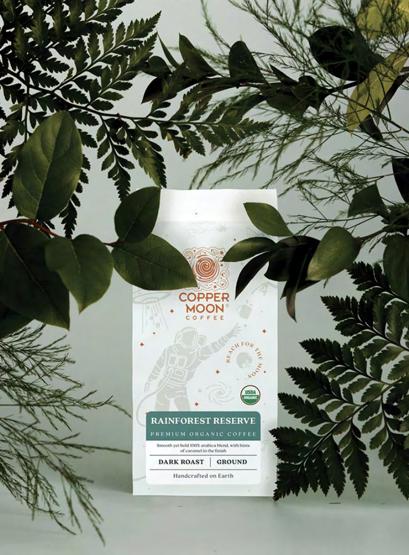

Designed by the French floral artist Christian Tortu, the Marrakesh collection by Costa Nova harmoniously blends sustainable craftsmanship, nature’s essence, and Moroccan mystique. Inspired by the enchantment of the Majorelle Gardens, the collection’s delicate floral forms invite diners into a sensory journey. Infused with the vibrancy of Moroccan markets, the distinctive interplay of speckled glazes and sandy, unglazed textures adds a unique touch to your culinary creations. Imagine, as you set the table, a play of radiant light elevating each dish- the colorful glossy glaze of the plate beneath gently casting its glow upon the unglazed surface of the item placed above, painting an exquisite interplay of brilliance and shadow. Made of ecogres, Marrakesh isn’t just an aesthetic choice; it’s an invitation to showcase your dedication to sustainability.
Step into nostalgia with a modern twist—the Dirty Shirley Cherry Vanilla cocktail is the latest sensation that’s taking the ready-to-drink market by storm. This refreshing take on a classic combines the sweet, tangy essence of organic cherry juice with a smooth vanilla finish that’s pure indulgence. With a balanced 5.9% ABV, this cocktail is crafted using 11X distilled vodka, real cane sugar, and natural flavors, making it the perfect blend of sweet and sassy. Each sip transports you back to carefree days while offering a sophisticated kick that’s perfect for any occasion. Whether you’re lounging by the pool or hosting a chic soirée, Dirty Shirley Cherry Vanilla is the ultimate companion. With just 150 calories per can, it’s light enough to enjoy without guilt. Food and Beverage Magazine is thrilled to spotlight this flavorful gem, a must-try for cocktail enthusiasts everywhere. Cheers to sweet memories, with a grown-up twist!


The Epson ColorWorks® CW-C6000 on-demand label printers produce highquality food and beverage labels in real time while offering environmental benefits, allowing food and beverage brands and manufacturers to easily boost brand appeal and perceived quality and save resources and simplify inventory management. Engineered for reliability, the CW-C6000 printers create labels with astounding image quality for food and beverage packaging, prime and boutique labels, and ultra-readable barcodes and legible fonts for state-ofthe-art product labels. When compared with a top-selling thermal label printer, the CW-C6000 generated 82% less consumable and packaging waste than two-step thermal label printing. It was also more energy efficient than the thermal transfer label printer, using 80% less energy while printing. The CWC6000 printed up to 50% more labels with ink cartridges compared to ribbons and required approximately 25% less maintenance time, which can help increase productivity.
Better-for-you pasta brand Felicia is setting the standard for creating earthfriendly manufacturing processes in the food industry. Since its inception in 2009, the brand has maintained a strong emphasis on the conscious management of natural resources through several processes including protecting native soils and contributing to biodiversity by leading the widest sustainable legume supply chain in Italy which helps reduce emissions of greenhouse gasses into the atmosphere, utilizing a photovoltaic system within a trigeneration plant to produce clean and efficient energy to power manufacturing processes, and adopting a cyclical cultivation process for key ingredients like spirulina where the water used for pasta production is reused for farming the superfood. Additionally, the photosynthetic activity of the spirulina microalgae also sequesters and absorbs CO2 from the air. Our pasta, made from organic brown rice and 100% Italian-grown spirulina, is a nutritious innovation.
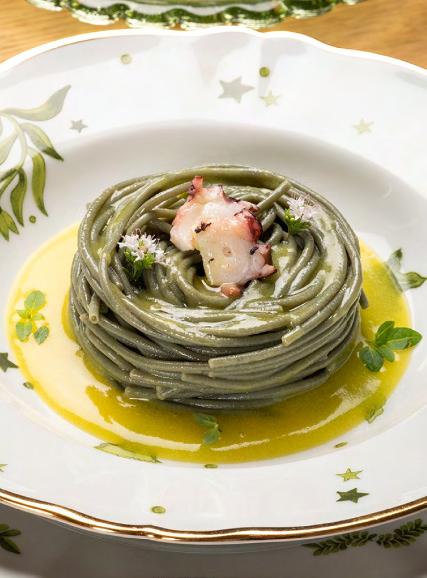
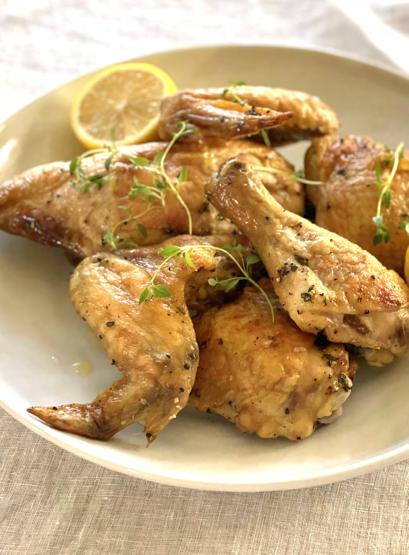
Grass Roots Farmers Cooperative launched its first Pastured Chicken Box featuring a variety of regeneratively raised chicken cuts. Regenerative agriculture is a farming system that focuses on improving soil health, biodiversity, and ecosystem resilience. It prioritizes natural processes, reduces reliance on harmful inputs/chemicals, and sequesters carbon to combat increasing global temperatures. Grass Roots Farmers raise all livestock and birds on lush, no-spray pastures so you’re getting nutrient-dense, flavorful meat the way it was meant to taste. In this box, you’ll receive 3-4 packages (each) of boneless, skinless chicken breasts, chicken tenders, chicken wings, drumsticks, ground chicken, boneless thighs, and bone-in thighs. NO additives, saline, chlorine, or antibiotics - just the best of the best chicken! Grass Roots Co-op is committed to sustainable farming outcomes and treating animals and the land with care and respect. Support small American farmers and taste (and feel) the difference of chicken raised with intention.
Greenbar Distillery, LA’s first distillery since Prohibition and home to the world’s largest portfolio of USDA-certified organic spirits, was founded on the principle of leaving the environment better than they found it. At the heart of their sustainable collection is the Garden Vodka, a small-batch spirit made in LA with locally sourced ingredients to capture the essence of crisp, seasonal produce. Infused with celery, dill, coriander, fennel, mint, and thyme, this vodka is additive-free, gluten-free, and sugar-free, making it perfect for savory, fullbodied cocktails or enjoyed straight for a silky, herbaceous sip. Each 750mL bottle is packaged in lightweight, recyclable glass with minimal decoration to reduce environmental impact. Best of all, for every bottle sold, Greenbar plants a tree in Central America in partnership with Sustainable Harvest International, providing shade for crops like coffee and cacao while sequestering CO2 for 50-100 years. To date, they’ve planted over 1 million trees!


Inline Plastics is revolutionizing the food packaging industry with their groundbreaking reborn initiative, setting a new standard for sustainability. As pioneers in using advanced recycling technology (also known as chemical recycling) for thermoformed food packaging, they’ve successfully integrated 10% post-consumer recycled PET into all their PET products. This achievement, verified by SCS Global Services, demonstrates their commitment to transparency and environmental responsibility. reborn isn’t just about reducing waste; it’s a bold step towards a circular economy in packaging. By creating a closed-loop system, Inline Plastics is actively minimizing environmental impact and championing responsible resource use. Building on this ecofriendly foundation, the company has recently launched innovative products: a family of 7” Rounds and a 3-compartment rectangle. These additions combine convenience and safety with sustainability, featuring patented tamper protection, leak-resistant designs and 100% recyclable. With these innovations, Inline Plastics continues to lead the charge in food packaging.
Karma Water is making waves in the sustainability movement with its Hydration Kits. Designed to reduce plastic waste, the kits include a BPA-free reusable bottle compatible with Karma’s signature PushCap technology. By offering a convenient and eco-friendly way to enjoy Karma Water, the company is empowering consumers to make a positive impact on the environment. With the purchase of each full kit, customers contribute to a cleaner planet by removing the equivalent of 28 plastic bottles from nature. Karma’s Hydration Kits are leading the charge towards a more sustainable future, with over 160,000 single-use bottles saved to date. By choosing Karma Hydration Kits, consumers are not only enjoying a tailored hydration experience but also contributing to a cleaner, greener planet.


In addition to typically eco-friendly practices such as recycling, composting, and using almost zero energy in production, Keep It Savory Salt Co also works towards building a sustainable community. The Garlic Scape sea salt is a great example of how they do that work. Their model: Planet and People. By sourcing fresh ingredients from hyperlocal farmers and vendors on Chicago’s historically disinvested West Side, investing in the neighborhood economy. For the Garlic Scape sea salt, the scapes were grown by folks at Windy City Harvest, traveled exactly 9 minutes to their facility and processed by workers who earn 42% above Chicago’s minimum wage. Garlic Scape sea salt is packaged in beautiful, refillable glass jars, shipped in recyclable/compostable packaging, and delicious on fresh tomatoes, in compound butters, and we love it on grilled salmon. Here’s to a life that tastes good and does good!
Laws Whiskey House has launched its Headwaters Series, a limited-edition whiskey collection dedicated to honoring and conserving Colorado’s rivers. The first release, the Headwaters Series Four Grain Bourbon, focuses on the Colorado River, one of the most endangered river systems in the U.S. This unique bourbon is crafted using Colorado-grown heirloom grains and Rocky Mountain-fed water, resulting in a rich, flavorful spirit. Ten percent of sales from this release will benefit the Shoshone Water Right Preservation, an initiative working to protect the Colorado River’s largest and most senior nonconsumptive water right. With the Headwaters Series, Laws Whiskey House aims to raise awareness about water conservation in the West and contribute to safeguarding Colorado’s vital rivers. This collection highlights the essential role water plays in whiskey production and reinforces the distillery’s commitment to sustainability and environmental stewardship.

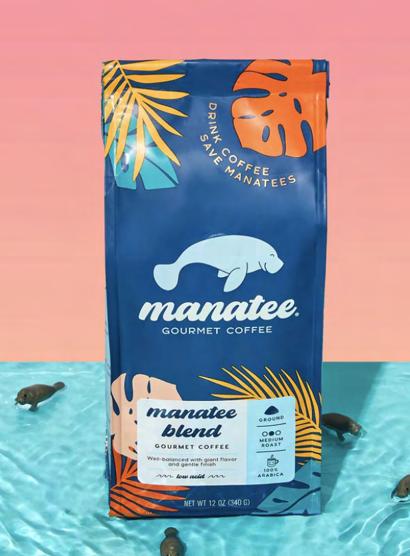
This “Coffee with a Cause,” was founded in support of manatee conservation by brothers Brad and Cary Gutwein with a mission to provide high-grade 100% Arabica coffee while aiding in improving manatee protection efforts. Manatee Coffee uses the company to raise awareness for Manatee Preservationthrough branding, packaging, and partnerships, thus the brand has attracted much attention to the Manatee plight. And, more importantly, has also donated more than $65,000 through trusted partnerships with organizations directly involved with Manatee conservation including Save the Manatee Club, The Mote Marine Lab & Aquarium, Clearwater Aquarium, and The Florida Fish & Wildlife Foundation. The Manatee Blend has a big flavor profile with the invigorating aroma, smooth, velvety texture, with a sweet gentle finish.
The MasterLine freshwater dishwasher is the latest powerful, durable, and efficient professional dishwasher from Miele. Built with Miele’s renowned commitment to quality, innovation, design, and sustainability, the MasterLine was designed to rise to the challenges of commercial dishwashing and promise to reduce your workload and deliver hygienic results while saving our valuable resources. With a powerful two-level cleaning performance, short cycle times, economical programs, and resource-saving technologies such as an integrated dosing pump for liquid detergent. All this leads to a low water, electricity and detergent consumption. It is tested for 28,000 cycles to withstand continuous commercial loads. Combined with durable components made from recyclable materials, the MasterLine is a long-term, economical solution for professional dishwashing.


Minor Figures is dedicated to sustainability, embodying a vision where environmental responsibility meets exceptional quality. Their Organic Barista Oat Milk is a prime example of this commitment, offering a plant-based alternative that’s approximately eight times less carbon-intensive than dairy milk. Crafted for professional baristas, this oat milk blends seamlessly into coffee, enhancing flavor while reducing environmental impact. Minor Figures believes that making sustainable choices doesn’t mean compromising on taste or enjoyment. Their Organic Barista Oat Milk reflects their ethos of combining superior product quality with a dedication to reducing harm to the planet, making sustainability an integral part of every cup.
Once Again Nut Butter’s USDA certified organic peanut butter (unsweetened and salt free) is crafted from just one ingredient - ethically sourced, dry roasted peanuts milled creamy. It’s also Non-GMO Project Verified, gluten free, vegan, and kosher certified. Packaged in 100% recyclable and 55% recycled glass jars, the spread is part of the company’s Honest in Trade program, which looks at sustainability through a triple bottom-line approach addressing environmental impact, social and supply chain justice, and producing safe, high-quality foods. The product is also verified through SedEx and HowGood, third-party organizations that provide added transparency into the responsible sourcing practices of this nearly 50-year-strong company. Once Again also gives back both locally and abroad through community sponsorships, donating its excess food waste to local farms and wildlife enthusiasts, and purchasing solar and wind turbine credits to offset its electrical use.
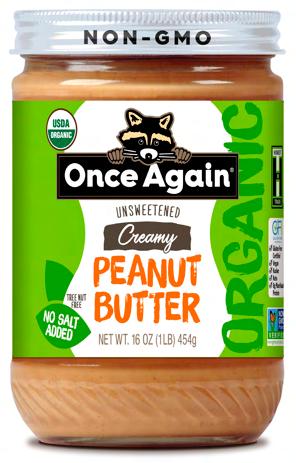

PlantFusion is an organic, clean, green and hypoallergenic source of protein containing eight powerhouse fruits and vegetables that have been fermented to improve nutrient absorbability. Made with whole foods, organic plant proteins and a blend of six species of medicinal mushrooms providing a well-balanced profile of plant based amino acids. Now available in completely compostable packaging bags.

AutoO2 from ProvisionAi provides load-building optimization for trucks shipping food and beverages. With 91% of all trucks underloaded, shippers ship costly “air.” Without optimized load building, planners must settle for shipments being less than full. It is hard to know how to combine requirements to max-out trailers, keeping in mind that the loads must be axle-legal and arrive without any product damage. Thousands of examples show an opportunity to increase payload by 5-10%, plus shippers use fewer trucks, which lowers carbon emissions. 285K tons of CO2 removed. Last year, ProvisionAi eliminated 88,000 trucks from the road; this year, they will eliminate 188K trucks. Shippers that benefit from using fewer trucks and saving costs and carbon emissions include Riviana, Diageo, and others.

REBBL’s new 26g Protein Shakes feature a sustainable, upcycled-certified, and non-GMO Project Verified plant protein blend, setting a new standard for ecofriendly, high-protein beverages. REBBL’s 26 Protein Shakes are crafted with an innovative protein blend that utilizes EverPro, an upcycled certified barley protein developed by EverGrain. Upcycling transforms brewing byproducts, commonly known as brewer’s spent grain (BSG), into a premium, plant-based protein source. This process provides a rich source of protein while reducing food waste and greenhouse gas emissions, reinforcing REBBL’s commitment to sustainability and empowering consumers with plant-powered functional fuel. REBBL Protein Shakes are now available in 12 oz. ready-to-drink varieties at Target stores nationwide. Offered in three classic flavors, Chocolate, Vanilla and Cookies & Creme, REBBL’s 26g Protein Shakes offer a delicious and convenient way to support everything from muscle recovery to everyday wellness.
Simple Times Mixers, the leader in clean-label ultra-premium mixers, recently rolled out fully curbside recyclable packaging. The change aligns with the brand’s zero waste initiative as it delivers its award-winning products to customers across the US. Additionally, the company’s glass return and reuse program puts more than five tons of glass back into circulation annually, and a portion of the food waste generated by the fresh juicing process is sent to distillers to be used as ingredients to craft fruit-infused spirits. The bundle brings together Honey Peach Cold-Brewed Tea, Raspberry Mule, Blackberry Lemonade, and Mint Lemonade—all a perfect companion for your favorite whiskey bourbon or whiskey.

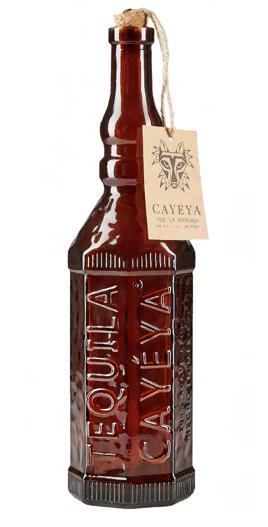
Tequila Cayéya’s Blended Reposado is a sustainably packaged spirit. The tequila’s bottle is made from recycled Pacifico beer bottles that are made at a local glass factory in Tonala, Jalisco, Mexico. Tonala is known for its glass and handicrafts and the brand’s co-founder wanted to create unique bottles that can be reused after the tequila is consumed. The bottle is made from 100% recycled materials, its packaging uses artisanal glass where each bottle is made individually by hand. The molten glass is manually poured into metal molds, where they are then slowly cooled down using brick ovens to seal the bottles and avoid breakage. The labels on the bottles and hang tags are made from recycled kraft paper. There’s also twine adhered to the cork on each bottle. After finishing the tequila, the bottles are often reused for storing cooking oils, simple syrups, garnishes, plants and more.
The Power of SLOW is a refreshing innovation in the beverage industry, offering a taste of tradition with modern health benefits. This award-winning drink harnesses the natural goodness of coconut flower sap, delivering a lowglycemic energy boost without added sugars. Born from ancient practices in coconut-growing regions, The Power of SLOW embodies sustainability and ethical farming in its own farm in Lionheart Farms, where organic regenerative agriculture is practiced ensuring eco-friendly production while uplifting the lives of farmers and farming communities by connecting them to global markets. Available in other flavors, both carbonated and non-carbonated, this versatile beverage caters to diverse palettes while promoting a healthier lifestyle. The Power of SLOW not only quenches thirst but also connects consumers to the concept of slow living and respect for nature’s bounty.


Crafted by Traditional Medicinals, a trusted leader in herbal wellness, this tea harnesses the power of Astragalus root extract and Reishi mushroom body extract, two revered ingredients known for their immune-boosting properties in traditional medicine systems. What sets Stress Ease Immune Tea apart is its unwavering dedication to quality and sustainability. Traditional Medicinals prioritizes sourcing certified organic or wild-harvested herbs, ensuring sustainable growing practices and avoiding synthetic chemicals and pollutants. Suppliers are selected based on their ability to meet stringent quality standards, often developed over years of collaboration. Through initiatives like Fair Trade and FairWild, the company fosters equitable relationships with farmers and collectors, ensuring fair wages and incentivizing the creation of highquality products. This commitment to ethical sourcing and quality assurance guarantees that each cup of Stress Ease Immune Tea delivers potent, reliable immune support without compromising environmental or social integrity.
Wiliot addresses inefficiencies and waste across supply chains by creating an ambient IoT that brings intelligence and internet connectivity to every single ‘thing’ in the global supply chain. The Wiliot ambient IoT Visibility Platform connects the digital and physical worlds using its IoT Pixels that enable food products to transmit itemlevel information about their carbon footprint. With this data, food manufacturers and grocers are equipped with the info they need to track, manage, and reduce their carbon emissions. Wiliot IoT Pixels harvest power from the radio waves that are all around us. The battery-free nature of IoT Pixels means that they’re an order of magnitude smaller in size and lower-cost than their battery-powered counterparts. Produce stays fresher longer, reducing the waste; delivery routes are more efficient, requiring less fuel and emitting lower greenhouse gas; stock-checks transition from daily to real-time, resulting in supply chains with lower carbon footprints; and more.




Yes, it’s called MUD\WTR. No, it does not taste like mud. Just ask your own customers.
When adaptogenic mushrooms burst onto the scene in the modern Western health movement, MUD\WTR was one of the first ones out the gate. Founded in 2018 by artist and designer Shane Heath, the drink was just supposed to be Shane’s answer to his own challenging relationship with cafeine - a way to combat the jitters and poor sleep that cofee often caused. But as he started bringing it to work, the drink, which tastes like masala chai and cacao had a baby, spread. Quickly. Soon, Shane found himself the head of a multi-million dollar business.
Now, MUD\WTR is taking its next big leap: ofine.
Winter Ridge, a natural foods store in the mountain town of Sandpoint, ID, was one of its earliest adopters, and the bet has paid of. “We brought MUD\WTR in in 2021 because it was unlike anything on our shelves,” says Sheridan Grace, a rep from Winter Ridge, “and our customers were eager for access. It’s absolutely exceeded our expectations in sales and customer loyalty.” As the online company evolves into an on-the-shelf company, Grace says customers come in the door knowing the brand, but like having the chance to pick it up and see it before they buy. Winter Ridge ofers them that chance. “Consumer demand is a huge factor in what stays on our shelves, and our consumer chooses MUD\ WTR,” concludes Grace.

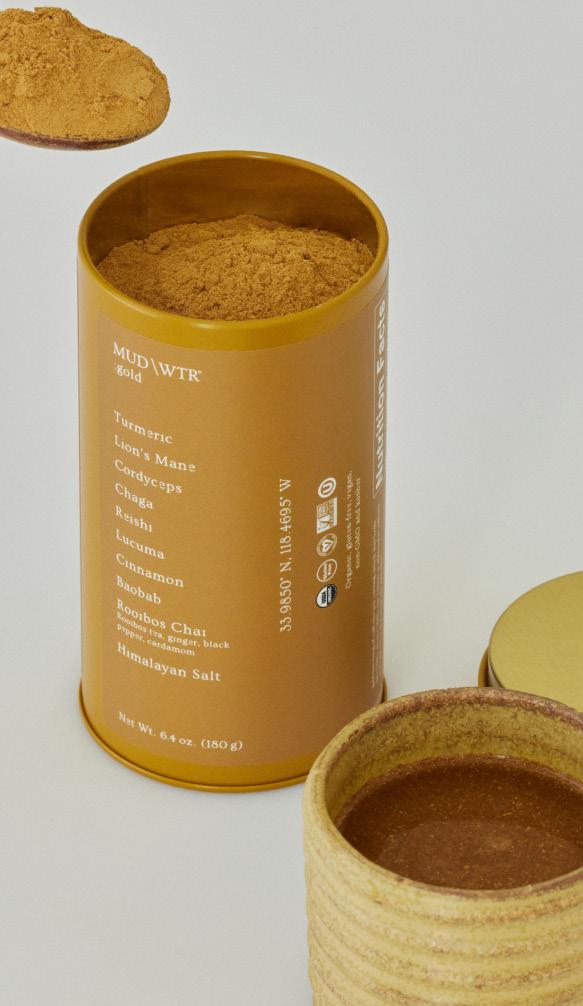
“MUD\WTR stands behind their product with confdence, and that shows in customer loyalty and sales. It’s a superior product, and that makes it an easy choice.”
Sheridan Grace, Winter Ridge
What’s special about MUD\WTR is more than just flavor - it’s the premium adaptogenic mushrooms it employs. According to the latest SPINS data, tea & cofee options with functional mushrooms are growing 35x faster than other tea & cofee options in the natural channel. And MUD\WTR is at the top of the category, both in brand recognition and quality. MUD\ WTR has been featured in publications like The Wall Street Journal, Rolling Stone, BBC, Forbes, and recently made its TV debut on Good Morning, LA. And with 2,240 mg of US grown, organic mushrooms, MUD\WTR has more mushrooms per serving than any other ofering on the market. That’s why consumers are looking for it on shelves. Winter Ridge is known by its customers for curating products with high quality, healthy ingredients that are held to strict standards. MUD\WTR’s similar commitment to premium, quality ingredients made it attractive to the Idaho grocer. “It’s a superior product, and that makes it an easy choice,” says Grace.
“MUD\WTR stands behind their product with confidence, and that shows in customer loyalty and sales. It’s a superior product, and that makes it an easy choice.” - Sheridan Grace, Winter Ridge.
When Winter Ridge started carrying MUD\WTR 3.5 years ago, they only carried single serving-sachets of the Original flavor. Since then, they’ve expanded to carry all four blends - Original, Matcha, Turmeric, and Rest - in the signature 30-serving tins, designed by Shane himself. Winter Ridge also carries Original and Matcha in 12-serving pouches, which they say is more approachable for new customers. But they aren’t stopping there. They’re currently working on a new ofering: expanding it to their deli.
“[MUD\WTR] is incredibly generous in supporting their presence in stores,” according to Winter Ridge. “They’re committed to fostering a successful partnership between brand and retailers. Our demographic is drawn to high quality products, and across the board they ultimately decide what stays on our shelves.” That’s why MUD\WTR continues to be the right choice for them.
Rise to the occasion. Get MUD\WTR on your shelves now by going to https://mudwtr.com/pages/wholesale to get started!

“As a customer of MUD\WTR, it’s so easy to interact with and order from the company. There’s the element of human connection in the ease of communication.”
Winter Ridge
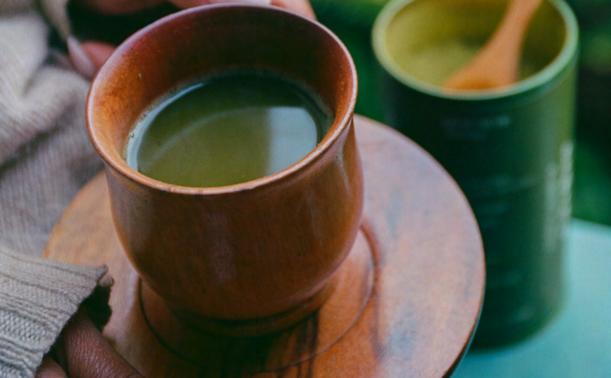



With over 550 employees and stateof-the-art warehouse facilities spanning 15,000 square meters— encompassing frozen, chilled, and ambient storage—KPC serves both retail and food service channels efficiently.
Established in 1982 by Fozan Al Fozan, Kuwait Proteins Company (KPC) has been a cornerstone in the Kuwaiti food market for over four decades. With over 550 employees and state-of-the-art warehouse facilities spanning 15,000 square meters—encompassing frozen, chilled, and ambient storage—KPC serves both retail and food service channels efficiently. Their fleet of 70 delivery trucks ensures that products reach customers promptly and in optimal condition.
Since its establishment, KPC has been committed to delivering high-quality food products to the Kuwaiti market. This dedication to quality is evident in the company’s carefully selected portfolio, featuring some of the most trusted global brands. These include McCain, Danone, Quest, Lactalis, FrieslandCampina, and St. Dalfour. Each brand within KPC’s portfolio is chosen for its excellence and alignment with the company’s mission to provide superior products that meet and exceed consumer expectations.
“Innovation is at the heart of everything we do,” states Tareq Alfozan, a key figure in the company’s leadership. This forward-thinking approach has propelled KPC to the forefront of the food distribution industry in Kuwait. The company continuously seeks out brands that push the boundaries of food innovation, ensuring that they introduce only the best products to the market.

Exporting food products can be a complex and challenging process for suppliers looking to expand their reach globally. Partnering with a reliable and experienced company like KPC can simplify this process significantly. KPC provides support with local regulations compliance and logistical arrangements. Their expertise with market penetration, backed by their purchase department’s comprehensive services streamlines the entire export process. From initial export to the moment the product reaches store shelves, KPC assists every step of the way, ensuring a smooth and successful market entry.
The Middle East region offers a young population that favors Western-style foods, leading to increased demand for premium products and significant revenue growth opportunities. The dynamic market also offers chances to scale businesses and expand reach. By partnering with KPC, suppliers can leverage KPC’s extensive distribution network and market expertise to achieve successful market entry and growth.
KPC offers numerous benefits to its partners. They help develop competitive pricing strategies by reflecting local market conditions and purchasing power, and considering the impact of tariffs and logistics costs, ensuring products are competitively priced while meeting market demands. KPC’s unique selling proposition is its focus on superior quality, health benefits, and innovative

brands. Their dedicated marketing team works tirelessly to develop marketing campaigns that enhance brand visibility and drive consumer engagement, including organizing sampling and tasting activities to introduce new products. KPC’s sales team collaborates closely with partners to develop strategies that boost market penetration and maximize market share.
As KPC looks to the future, its commitment to quality, innovation, and customer satisfaction remains unwavering. The company is continually exploring new opportunities and partnerships to expand its product offerings, including sustainable brands that add value to its customers. By staying at the cutting edge of latest industry trends and consumer preferences, KPC aims to continue setting benchmarks in the food distribution sector.
In conclusion, Kuwait Proteins Company is more than a distributor; it is a pioneer driven by a passion for innovation and excellence. With a legacy spanning over four decades, KPC stands as a trusted leader in the Kuwaiti food industry, dedicated to bringing the best of global food products to the local market. As they forge ahead, their enduring commitment to quality and customer satisfaction ensures they will remain a cornerstone of the Kuwaiti food market for many years to come.






Sustainable supply chains are rising on the agenda across industries. The food and drink sector has a substantial carbon footprint, with research suggesting food production is responsible for 26% of the world’s greenhouse gas emissions. The industry is also especially susceptible to the impacts of climate change, with global warming posing a growing threat to agriculture and crop availability.
While many in the industry wish to prioritize sustainability, balancing carbon emission reduction with cost and logistics challenges associated with transporting food can be challenging as companies navigate complex supply chains.
Rick LaGore, co-founder and CEO at InTek Freight & Logistics spoke with us about how the implementation of temperature controlled intermodal transport can help reduce carbon emissions while enabling manufacturers to prioritize efficiency and cost.
Q. How would you characterize the impact of increasing sustainable regulations on the food industry?
The US is shifting towards a more eco-friendly and transparent business landscape, and sustainability regulations are becoming more common as expectations from consumers and investors change. People want to know the eco credentials of the products they are purchasing as the world grows more environmentally conscious, and so organizations need transparent supply chains that allow consumers to make informed choices.
The food and beverage industry does face some unique supply chain challenges, so adding sustainable practices to the list of considerations can feel complex. Like other products, food and beverage supply chains are susceptible to external disruptions, but due to the perishable and timesensitive nature of these goods, any issues can lead to more significant losses and shortages. Unlike some other forms of freight, temperature control is a key consideration, and time efficiency is paramount.
While managing these considerations can make it seem challenging to implement sustainable practices in addition, there are changes, such as the use of intermodal transport,
that reduce emissions while prioritizing temperature control and time efficiency.
sustainability of food and beverage supply chains?
While food travels to the US from across the world using different modes of transportation, domestically the tilt is heavily towards trucks, accounting for about 70% of food transportation with railway coming in a distant second at 17%.
Heavy-duty trucks are the fastest-growing contributor to freight emissions, notably air pollution and emission intensity which is exacerbated by traffic congestion and idle vehicles. Adopting other modes of transportation that reduce the number of trucks on the road is key, but often people are unfamiliar with the benefits that temperature controlled intermodal transportation offers.
Intermodal transport reduces the carbon footprint of freight transportation by 60% compared to trucking, making it highly effective for environmental sustainability.
This mode of transport employs railroad for long-haul transportation, with trucks handling the short-haul portion to move cargo without directly handling the goods inside. It has a far lower environmental impact than over the road and air cargo, while still offering reliable delivery times and refrigerated options. One intermodal train can transport the same amount of goods as 280 trucks, removing these trucks from the road. This not only cuts down on emissions but also eases traffic congestion.
Temperature-controlled intermodal, and any temperaturecontrolled option, not only works for refrigerated and frozen items, but also for higher temperatures. Therefore, it’s basically whatever temperature is needed to maintain product integrity. Considering intermodal for a variety of food and beverage freight when timing allows will allow businesses to reap these environmental benefits while also often saving on cost. Effective planning can also help shippers identify the most energy efficient route for cargo that will ensure food is still delivered within a specific time frame to ensure integrity. Proper planning will help to avoid scrambling for an expedited shipment with a higher carbon footprint when products could have taken another route and still meet delivery requirements.

Q. How would you address the cost concerns associated with sustainable practices?
Many may associate the implementation of sustainable practices with high cost, but options such as intermodal transport are both green and cost-effective.
Intermodal brings with it 15% to 18% lower freight transportation costs compared to truckload options on the same freight corridors. In the long term, choosing green transportation solutions mitigates risk of fines/penalties. As environmental impact regulations become more stringent, businesses that integrate sustainable supply chain solutions will find it easier to comply with emissions standards and other environmental requirements.
Q. Where would you advise shippers to begin their sustainability journey?
As managing complex supply chains can be a challenge, outsourcing logistics to a third party can make it much simpler to plan journeys.
Finding partners who have experience putting sustainability into practice, for example, those who are EPA SmartWay certified, will put you on the right track towards sustainability.


Rick LaGore is the co-founder and CEO at InTek. Rick is a leader in the logistics industry with over 35 years of experience, specializing in finance, strategy, operations, sales, and marketing. He is a is a leader in the logistics industry with over 35 years of experience, specializing in finance, strategy, operations, sales, and marketing. In addition to running InTek’s daily operations, Rick is a frequent contributor to industry publications and the financial community providing insight and analysis on the state of the domestic intermodal and trucking market. Rick also authors articles and co-hosts podcasts for InTek.
About InTek:
InTek was named among the Inc 5000 fastest growing privately held companies in the U.S. in 2022 and 2023, both a Top 3PL and Top Software and Technology Provider by Food Logistics Magazine in 2023, a 2023 Best Places to Work in Indiana honoree by the Indiana Chamber of Commerce and is SmartWay Certified by the U.S. Environmental Protection Agency.
For more information, visit www.intekfreight-logistics.com.

While food travels to the US from across the world using different modes of transportation, domestically the tilt is heavily towards trucks, accounting for about 70% of food transportation with railway coming in a distant second at 17%.
survey responses, social media, review sites
By Peter Zaidel, Director of Product Management, Alchemer

Your restaurant solicits feedback in surveys, polls, social media posts, and review sites. And that feedback comes back to you in two different ways:
• Structured feedback: Answers to survey questions using radio buttons or check boxes.
• Unstructured feedback: Any text response sent to you via survey, social media, review site, or other sources.
Structured feedback (the type coming to you from radio buttons you create in your survey) can be useful because it is quantifiable. You take notice when someone rates you a zero. But structured feedback doesn’t tell you the full story of the customer’s experience. It doesn’t give you something to act on, in the customer’s own words.
Unstructured feedback is full of valuable insights and sentiments. But the sorting, tagging, and analysis are obstacles to understanding that feedback, and to making it valuable to your business.
In short, unstructured feedback is the best representation of the customer experience, despite current challenges with quantifying that feedback.
Let’s talk about that customer experience. With Accenture finding that 37% of people think companies are prioritizing higher profits over better customer experience, there’s a lack of trust and a feeling that companies may not care about the customer experience.
But the experience is what brings customers into restaurants. So, why should restaurant owners care about customer experience (besides the obvious)? McKinsey found that companies that care about customer experience tend to have 2X the growth of companies who don’t.

Caring about the customer experience is good business, especially for restaurants.
So, how do you keep a finger on the pulse of what your restaurant guests enjoy or dislike? How do you quantify that open text feedback that is so representative of the customer experience?
Restaurant brands stand to gain more than many industries from open text analysis or OTA. According to recent SOCi research, restaurants receive more reviews on Google than just about any brick-and-mortar business category, with the average chain or franchise restaurant location having about 1,500 reviews.
All of those reviews include customer text responses. So do your customer surveys. But quantifying that feedback was a manual task in the recent past. Tagging feedback with customer sentiment was time-consuming and introduced bias.
OTA is a new technology now available to restaurant owners and franchisees. OTA uses AI-powered large language models (LLMs) to analyze text at scale and identify sentiments and themes in your feedback. Is service always the issue? What do guests think about the menu? OTA can tell you instantly.
OTA platforms quantify all those qualitative responses so you can easily act on those issues and track progress.
Not all OTA platforms are built the same though. There are four key capabilities restaurant owners should look for in any OTA platform:
1. Text analysis: Does your OTA platform use phrasal analysis to accurately identify and categorize feedback theme, emotion, and sentiment?
2. Analytics and reporting: Does your OTA platform include reporting that lets you track and visualize key feedback metrics to measure sentiment over time?
3. Dashboarding: Does your OTA platform provide a customized dashboard that instantly aligns your teams on their target outcomes and shows where they need to act in real time?
4. Trends and workflows: Does your OTA platform include anomaly detection to instantly alert you to important changes that occur?

Imagine all your unstructured feedback — in surveys, reviews, social media, and elsewhere. Now imagine being able to instantly understand the themes in that feedback. Where is your restaurant’s customer experience failing? Where are you beating the competition? OTA summarizes the text into insights you can act on.
With restaurants receiving lots of open text feedback, they are among the industries most needing an OTA platform. Without it, you are either guessing at where your customer experience fails or succeeds — or you are asking for structured feedback ripe with bias and assumptions.
Restaurants should harness the power of the feedback they already regularly collect. Select an OTA platform to help parse unstructured customer feedback into themes and sentiments, so you can easily take action.
OTA uses AI-powered large language models (LLMs) to analyze text at scale and identify sentiments and themes in your feedback.
Is service always the issue? What do guests think about the menu? OTA can tell you instantly.
Peter Zaidel is the Director of Product Management for Alchemer, an enterprise feedback platform. Peter is an experienced product management and solution delivery leader with a demonstrated history of working in the software (SaaS) and services industries. His specialties include product management and strategy, product launch, design thinking, and solution architecture. Previous to Alchemer, Peter spent 15 years in product development with KPA and is a graduate of Penn State University.
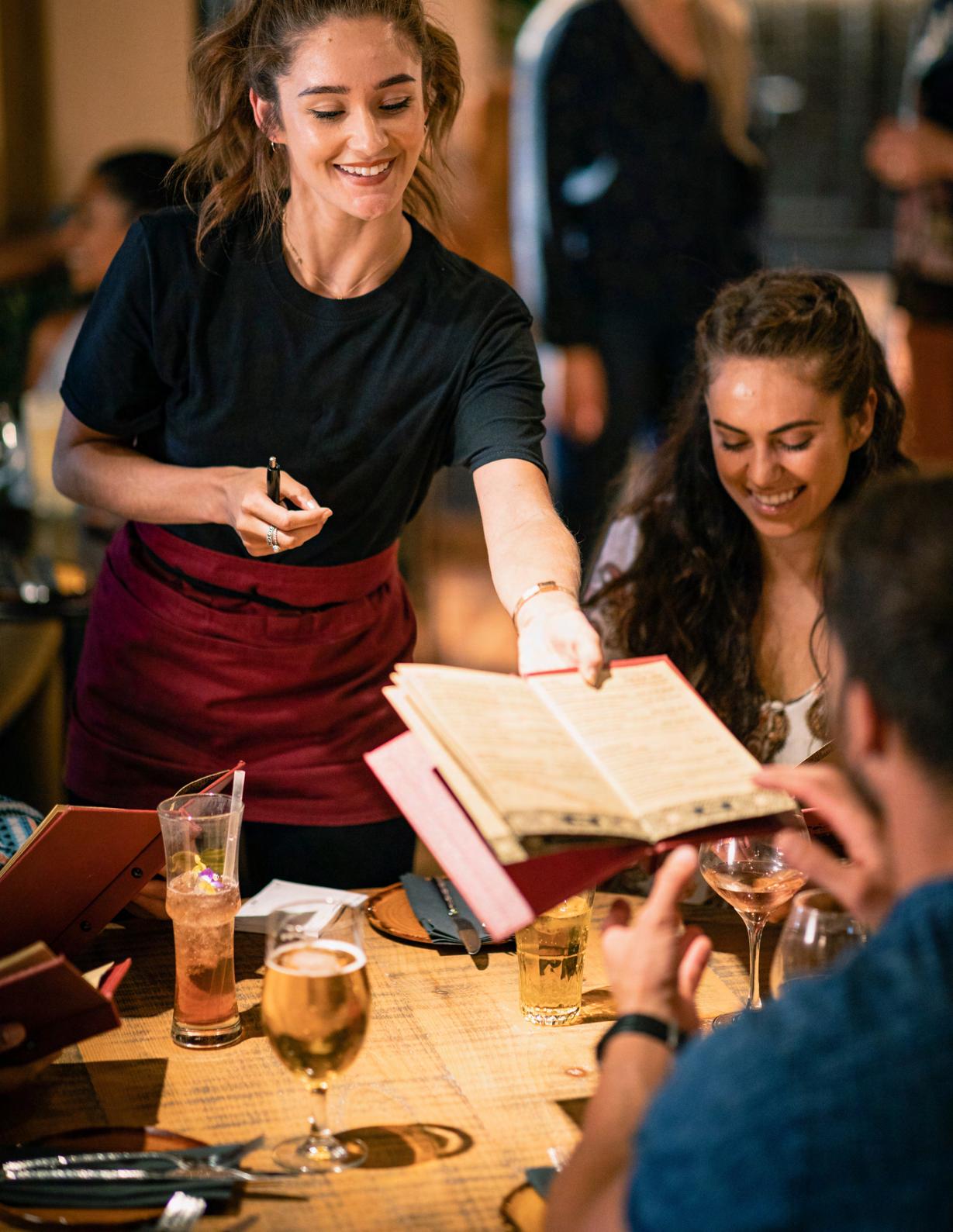
Amy Colbourn, Managing Director, MONOGRAM
Recently I made a reservation for two at a premium steakhouse in Scottsdale, Arizona to celebrate my birthday. Using OpenTable to book the dinner reservation, I was prompted to note whether this was a special occasion. Anticipating a special dessert with a “Happy Birthday” message swirling in chocolate on the perimeter of the plate, I checked the box for “Birthday” and confirmed the reservation for a party of two.
When we arrived, we were seated in a quiet romantic corner of the restaurant away from the social buzz of the bar. The only problem was that this was not a romantic celebratory dinner for two. Instead it was me dragging my teenage son out for a nice meal to celebrate my birthday.
The moral of the story is this: a restaurant can benefit greatly from knowing why a guest is showing up - which version of themselves - and responding accordingly.
Guests visit restaurants for all sorts of occasions - birthdays, work dinners, anniversaries, nights out with friends, and so on. It’s a restaurant’s job to know which version of the guest is showing up on
any given day, and to know how to cater to that guest with ease. There are key practices that help brands create a lifestyle around food and beverage and, armed with the knowledge of understanding who’s showing up, you can use them to elevate your brand.
According to a survey conducted by Toast, 25% of guests see loyalty programs as extremely important to their guest experiences, and 24% of restaurant professionals see them as extremely important to their retention strategies. Restaurateurs can make every guest experience exceptional with personalization achievable through loyalty programs. Loyalty programs provide the perfect platform for creating a customer management system to enable you to deliver personalized experiences.
At a minimum, you can ask for information such as birthdays, anniversaries, dining preferences, and allergies as part of the data collection to join the loyalty program. All you need to personalize the visit is the names and preferences of guests.

An article from SpotOn, a leading technology provider offering insights and inspiration to help restaurant businesses compete and win, identified five types of restaurant guests. We explored the five types and identified ways to serve them to suit their specific needs and preferences.
#1. Health conscious consumer
Call out healthy options on your menu and be sure to offer substitutes.
# 2. Tech savvy diner
Balance technology with the human touch to create seamless dining experiences and add convenience where it matters.
#3. Social-media savvy guest
Social media has become a significant content source for potential customers. Stay up-to-date with the latest trends, encourage sharing, and be sure to engage on social platforms online.
#4. Eco-conscious visitor
Environmental impact of food production and consumption is a growing concern among consumers. Offer eco-friendly dining options and be honest about it.
#5. Experience-focused patron
Experiential dining is growing in popularity, especially among younger generations who seek dining experiences as forms of entertainment. According to Eventbrite, 75% of diners would pay more for a unique
dining experience. Do everything you can to empower your staff and encourage team members to curate exceptional dining experiences for guests.
It doesn’t take much to make guests feel special. Pay attention, ask questions, and request clarifying information. According to a survey conducted by PwC, 74% of consumers believe positive experiences influence purchasing decisions when it comes to making a decision about a restaurant. Sometimes it only takes going a little deeper to find out about who your customer is: who they are celebrating with, whether it’s a milestone event, or if they are visiting from out of town. In fact, according to the same survey, 63% of U.S. consumers say they’d share more information with a company that offers a great experience.
When armed with a little information, restaurateurs can create a bespoke design to how they approach service, and that can define how you deliver the experience. When expectations are met, consumers have a greater sense of satisfaction. A good experience is all it takes to create loyal guests eager to share their experiences within their circle of friends and people of influence.
To deliver a better, more customized experience for your guests it only takes a little more understanding in the beginning to deliver a positive and endearing experience in the end.
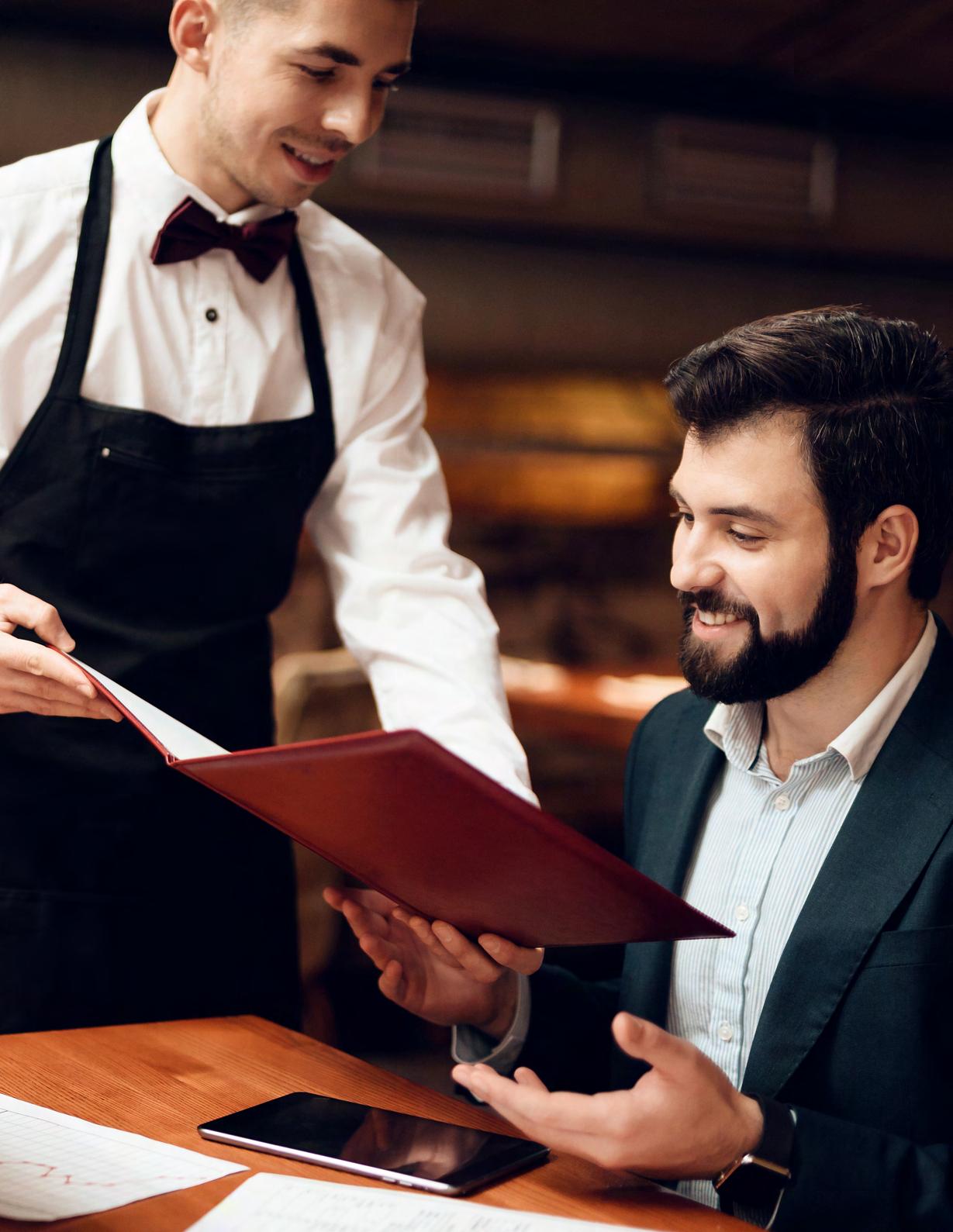

Imagine a world where your hot, delicious takeout arrives as fresh and secure as the moment it left the kitchen. That’s the reality Inline Plastics has been cooking up for over 55 years!
For more than five decades, Inline Plastics has been whisking together a perfect recipe for success. Their secret ingredient? Putting customers at the heart of everything they do. With a generous dollop of relentless innovation and a hearty serving of exceptional service, they’ve been satisfying appetites for quality packaging across the industry. And let’s not forget their special seasoning - a commitment to sustainability that adds
that extra flavor to every product they serve up. Inline Plastics doesn’t just follow recipes – they write them! Their five strategically placed U.S. manufacturing facilities ensure their safety solutions are always fresh and ready to serve, delivering products right where they’re needed.
So next time you’re savoring that perfectly delivered meal, remember there’s a good chance Inline Plastics helped make it possible. Because when it comes to food safety and customer satisfaction, they’re always cooking up something good!

Safe-T-Chef® isn’t just another item on the menu – it’s the hottest thing in cool packaging! As the first polypropylene packaging product line with patented tamper protection designed specifically for hot food applications, Safe-T-Chef® is truly one-of-a-kind. It keeps warm and prepared foods safe and secure, whether they’re chilling on the shelf or going for a ride with third-party deliveries. With high clarity and a modern design, it’s as pleasing to look at as it is protective. And let’s not forget the patented tear-strip technology that says “hands off!” to potential nibblers.
Safe-T-Chef® represents more than just innovative packaging; it’s the culmination of Inline Plastics’ decades-long commitment to keeping your food safe and your trust intact. It’s the latest chapter in their long history of market-leading solutions, always with customer satisfaction in mind. Safe-T-Chef® by Inline Plastics is a revolutionary line of food packaging, as the first polypropylene product family with patented tamper protection in its category, Safe-T-Chef® combines superior safety with convenience.
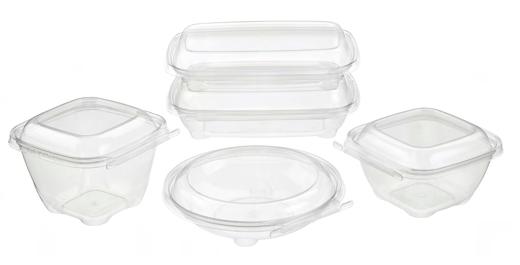
Inline Plastics is known for setting industry standards for tamper protection, they’ve now tackled a common frustration: fogging when packaging hot foods. Safe-T-Chef® vented options now include the new anti-fog feature. No more guessing what’s inside or struggling to see the details of your potential purchase. This breakthrough isn’t just about aesthetics, though it certainly makes food look more appealing. The anti-fog technology ensures that even when packaging hot foods, the steam doesn’t obstruct the view. Vibrant colors and textures of fresh ingredients remain visible, enticing customers and potentially boosting sales. Inline Plastics didn’t stop at solving the fog issue. They’ve also kept sustainability in mind. The all-clear design of Safe-T-Chef® packaging makes sorting for recycling easier, aligning with the company’s commitment to environmental responsibility.
Inline Plastics continues to prove that they’re not just keeping up with industry needs; they’re anticipating and solving problems before customers even realize they have them. It’s this forwardthinking approach that keeps them at the forefront of food packaging innovation. The Safe-T-Chef® line, with its new antifog feature, is setting a new standard in food packaging. It’s a clear example of how Inline Plastics is dedicated to enhancing both the consumer experience and the visual appeal of packaged foods, all while maintaining their unwavering commitment to safety and sustainability.

Inline Plastics is revolutionizing food packaging once again with their latest Safe-T-Chef® innovation: a sleek, non-domed flat lid. This new design caters to foods that don’t require extra headspace, offering a full, appealing appearance that’s sure to catch the consumer’s eye. Despite its low profile, the new lid doesn’t compromise on Safe-TChef®’s renowned features. It retains the patented tamper protection, exceptional clarity, and reliable leak resistance that consumers trust. What’s more, these flat lids bring added benefits: improved stacking capabilities and increased stability during transport.
This expansion of the Safe-T-Chef® line isn’t just about a new lid shape— it’s about creating new possibilities. It offers enhanced merchandising opportunities and greater versatility, allowing customers to choose the perfect packaging solution for their specific needs. With this innovation, Inline Plastics once again demonstrates its commitment to meeting the evolving demands of the food packaging industry, proving that sometimes, the best way to think outside the box is to redesign it.
PUTTING CUSTOMERS AT THE HEART OF EVERYTHING THEY DO.














































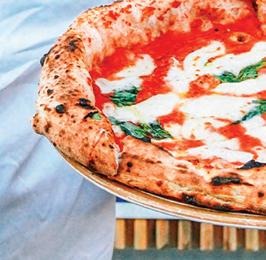











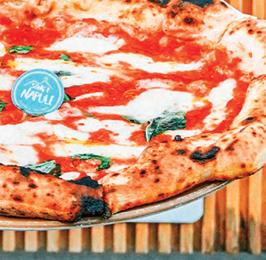







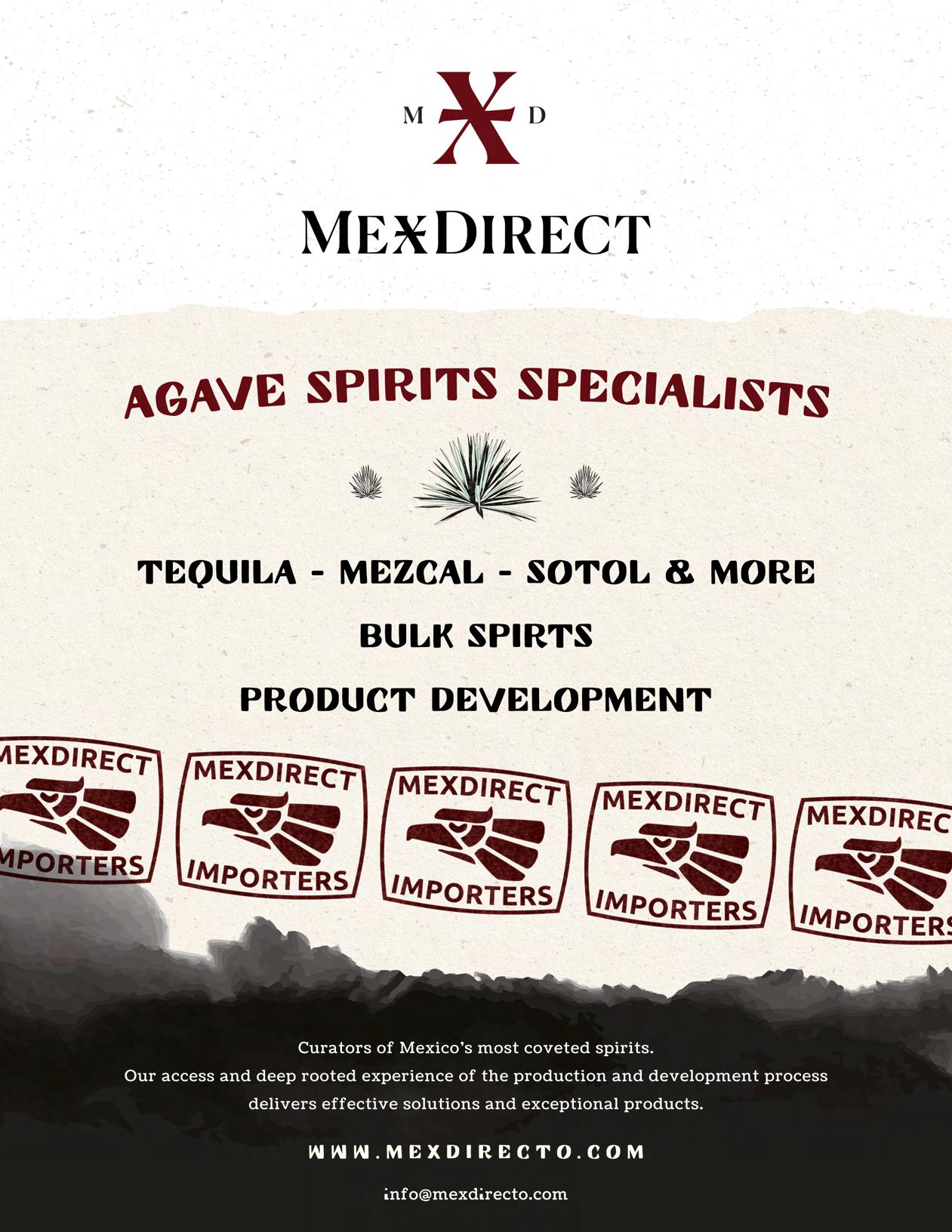














COVER IMAGE
Song’E Napule Pizzeria and Trattoria
PUBLISHER
MICHAEL POLITZ Michael@fb101.com
DIRECTOR & EDITOR-IN-CHIEF
LAUREN KANE Lauren.Kane@fbmagazine.com
SOCIAL MEDIA CONTENT MANAGER
SHELBY POLITZ Shelby.Politz@fbmagazine.co
DIRECTOR OF PROGRAMMATIC SALES
BARB ROGERS Programmatic@fbmagazine.com
ACCOUNT MANAGERS
LENORE O’MEARA Lenore.Omeara@fbmagazine.co
AMANDA DAY Amanda.Day@fbmagazine.co
SUSAN GOLD Susan.Gold@fbmagazine.com
CONTRIBUTING EDITORS
MICHAEL POLITZ
STEPHANIE BLITZ
CONTRIBUTING WRITERS
LAUREN MCINDOO
LENORE O’MEARA
SUSAN GOLD
SHELBY POLITZ
ETHAN BALSAMO
RYAN SLATTERY
We honor and remember the support of Chef Kerry Simon, Gary Cantor, Robin Leach, Chef Paul Prudhomme, & Gary Coles

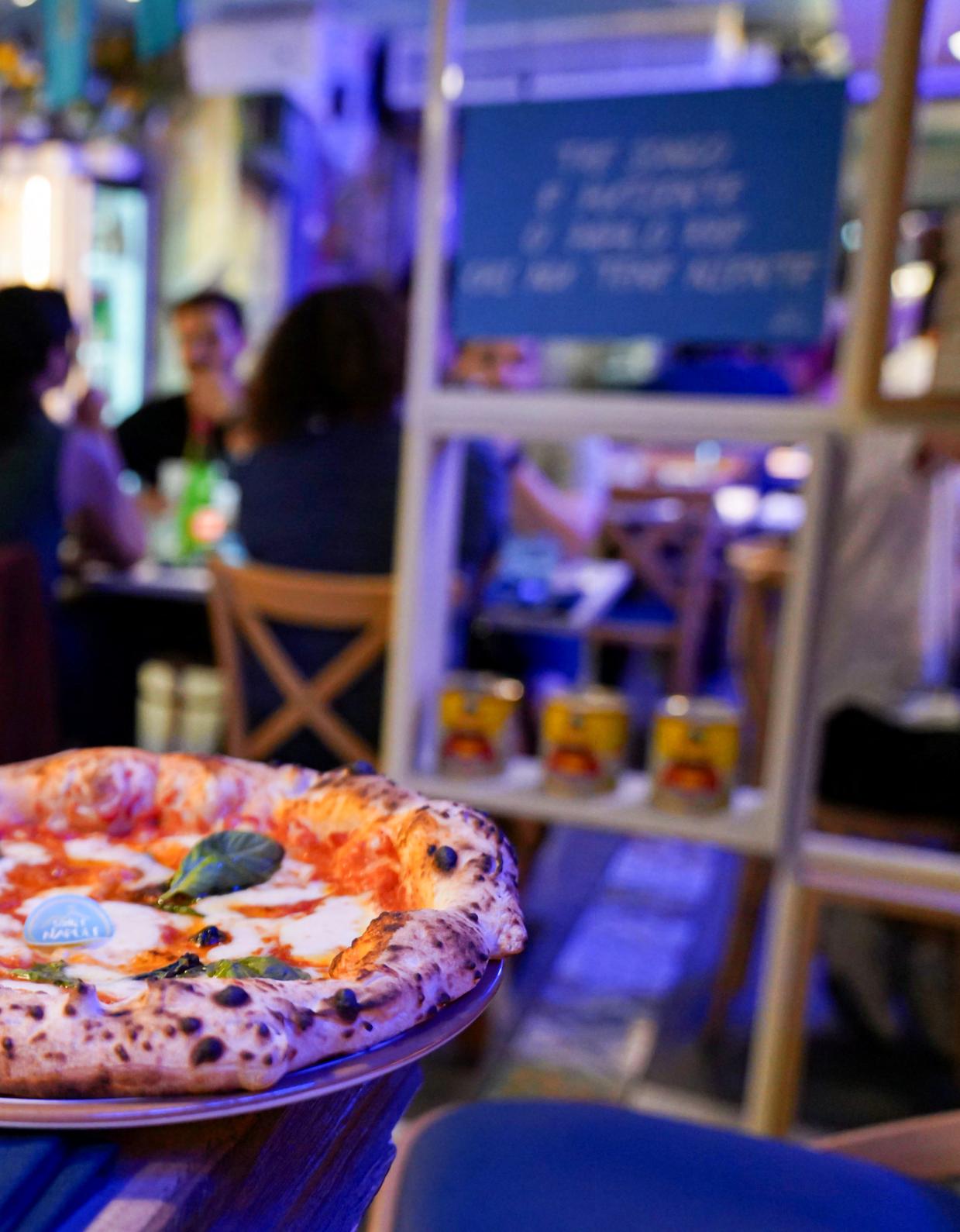


Song’E Napule Pizzeria and Trattoria Celebrates 10 Year Anniversary
This January marks the 10-year anniversary of the opening of the product line, numerous accolades, and an unyielding dedication to clams in a savory garlic sauce.

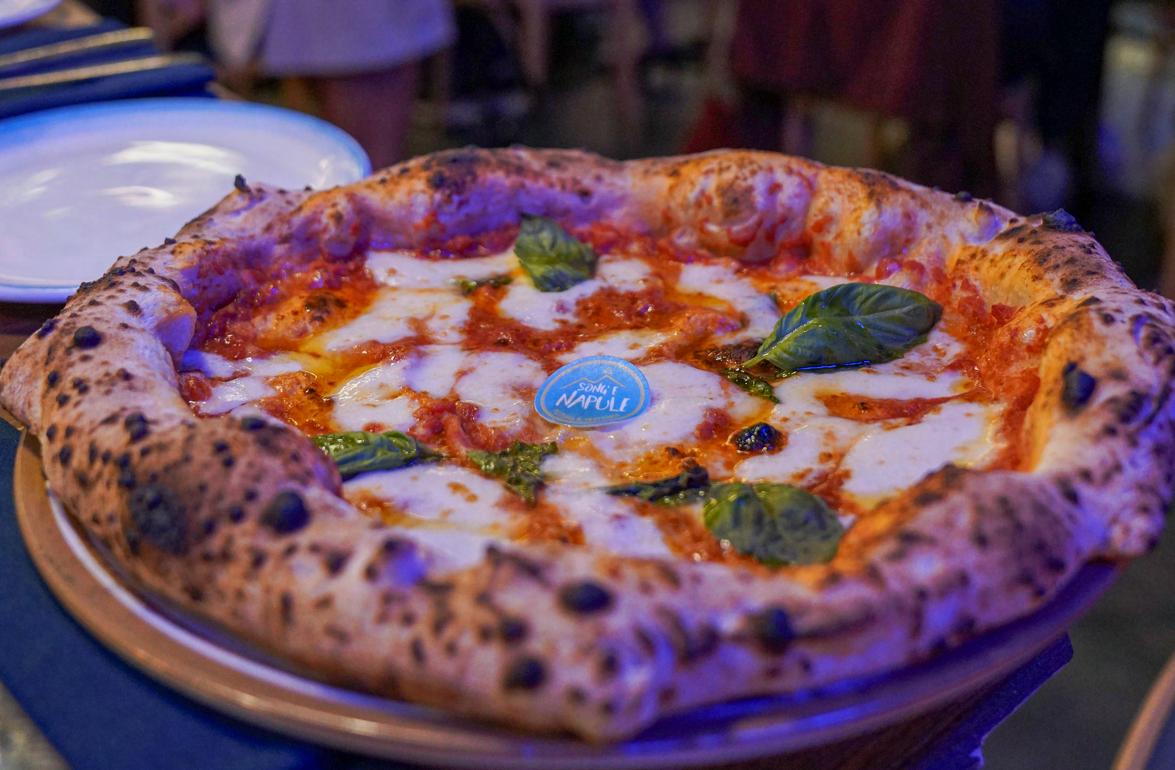
television programs such as home.
com and order online, visit songenapule.us
“We emerged from a dream to build a place in the US authenticity to America.”


Serves: 4 | Preparation Time: 15 minutes | Cooking Time: 20 minutes
400 g (14 oz) of spaghetti
300 g (10.5 oz) of Pomodorini del Piennolo del Vesuvio (if unavailable, use the sweetest cherry tomatoes you can find)
4 tbsp of extra virgin olive oil
2 cloves of garlic, thinly sliced
1 fresh red chili pepper, chopped (optional)
50 g (1.7 oz) of grated Pecorino Romano
50 g (1.7 oz) of grated Parmigiano-Reggiano
A handful of fresh basil leaves
Salt and freshly ground black pepper, to taste
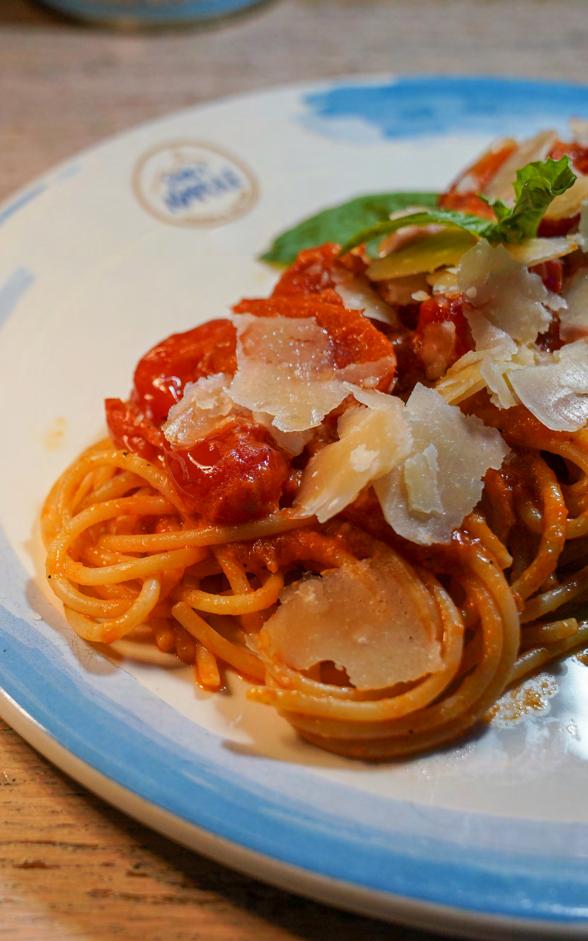
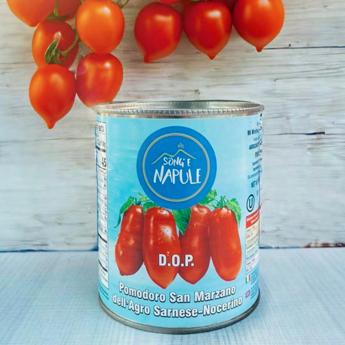
1. Rinse the Pomodorini del Piennolo and cut them in half. The tomatoes should be juicy and sweet, with a thick skin that adds a distinct flavor to the sauce.
2. In a large skillet, heat the extra virgin olive oil over medium heat. Add the crushed garlic and red chili flakes (if using) and sauté until the garlic is golden and fragrant, about 2 minutes. Be careful not to burn the garlic, as it can turn bitter.
3. Add the halved tomatoes to the skillet, stirring to coat them in the garlic-infused oil. Season with salt and pepper. Cook the tomatoes for about 10 minutes, until they start to break down and release their juices, creating a rich, flavorful sauce.
4. Meanwhile, bring a large pot of salted water to a boil. Cook the spaghetti according to the package instructions until al dente. Reserve a cup of the pasta water before draining.
5. Add the cooked spaghetti directly to the skillet with the tomato sauce. Toss the pasta in the sauce over low heat, ensuring every strand is well-coated. If the sauce is too thick, add a splash of the reserved pasta water to achieve the desired consistency.
6. Remove the skillet from heat and immediately sprinkle the grated Pecorino Romano and Parmigiano-Reggiano over the pasta. Toss again until the cheeses melt into the sauce, creating a creamy, glossy finish.
7. Finish with Basil. Tear the fresh basil leaves and add them to the pasta, giving it a final toss to incorporate their aroma and flavor.
8. Serve the Spaghetti allo Scarpariello hot, with an extra sprinkle of cheese and a drizzle of extra virgin olive oil.
Serves: 4-6 | Preparation Time: 30 min | Cooking Time: 6-7 hours
1.5kg (3.3 lbs) of onions(preferably blond onions)
600 g (1.3 lbs) of beef chuck or brisket, cut into large chunks
1 carrot, finely chopped
1 celery stalk, finely chopped
4 tbsp of extra virgin olive oil Song’E Napule
1/2 cup of dry white wine
350 g (0.8 lbs) of ziti or paccheri pasta
Salt and freshly ground black pepper, to taste
1 bay leaf
Grated Parmigiano-Reggiano cheese, for serving


1. Peel the onions and slice them thinly. Set aside. This dish relies heavily on the onions, which will cook down to form the base of the sauce, so ensure you have enough to fill your pot.
2. In a large, heavy-bottomed pot, heat the extra virgin olive oil over medium-high heat. Add the beef chunks to the pot, and brown on all sides. This step helps to develop a rich flavor. Once the meat is browned, season with salt and pepper.
3. Add the sliced onions, carrots and celery to the pot, stirring to combine. The onions should almost completely cover the meat. Reduce the heat to low and cover the pot, allowing the onions to slowly cook down, about 15 minutes.
4. Once the onions have softened, uncover the pot and pour in the white wine. Stir well to deglaze the pot, scraping up any browned bits from the bottom. Allow the wine to reduce slightly, about 5 minutes. Add the bay leaf.
5. Add 2 cups of water (or beef broth) to cover the onions and meat, bring the mixture to a gentle simmer, and then cover the pot again. Let the sauce simmer on low heat for 6-7 hours, stirring occasionally. The onions should melt into a rich, brown sauce, and the meat should become tender enough to break apart with a fork.
7. When the sauce is nearly ready, bring a large pot of salted water to a boil. Cook ziti o paccheri pasta according to the package instructions until al dente. Drain the pasta, reserving a cup of pasta water.
8. Toss the cooked pasta with the Genovese sauce, adding a splash of reserved pasta water if needed to loosen the sauce. Ensure the pasta is thoroughly coated with the rich onion and beef sauce.
10. Serve the Paccheri alla Genovese hot, topped with freshly grated Parmigiano Reggiano cheese.